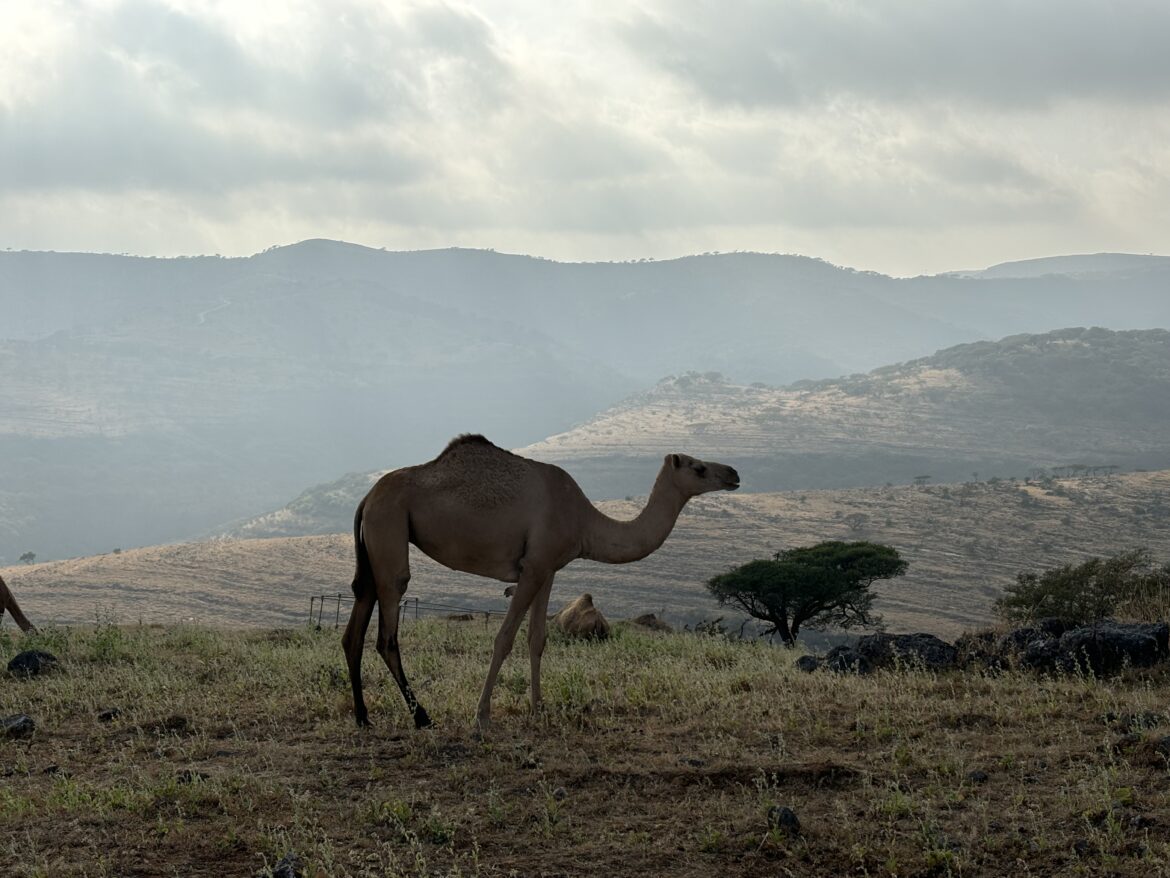Table of Contents
Points Miles and Bling (blog) contains referral or affiliate links. The blog receives a small commission at no additional cost to you. Thank you for your continued support. Credit Card issuers are not responsible for maintaining or monitoring the accuracy of information on this website. For full details, current product information, and Terms and Conditions, click the link included.
Introduction
Salalah, the capital of the Dhofar region and Oman’s second largest city is a hidden gem waiting to be uncovered! After a trip down memory lane in Kuwait, I finally had the chance to visit one of the most unique cities in both Oman and the wider Gulf region.
Salalah reached its peak prosperity in the 13th century, primarily thanks to the incense trade, particularly frankincense. Even today, the city remains known for frankincense and you can smell it’s refreshing scent in various spots around Salalah, including Salalah International Airport (SLL)! Over the centuries, Salalah has been governed by a number of kingdoms and empires. Eventually, becoming part of the Sultanate of Oman in the 19th century.
While the city is steeped in history and culture, what truly captivated me was its breathtaking, diverse landscapes. Salalah is a nature lover’s paradise, especially during a specific season when its landscapes transform into something magical.
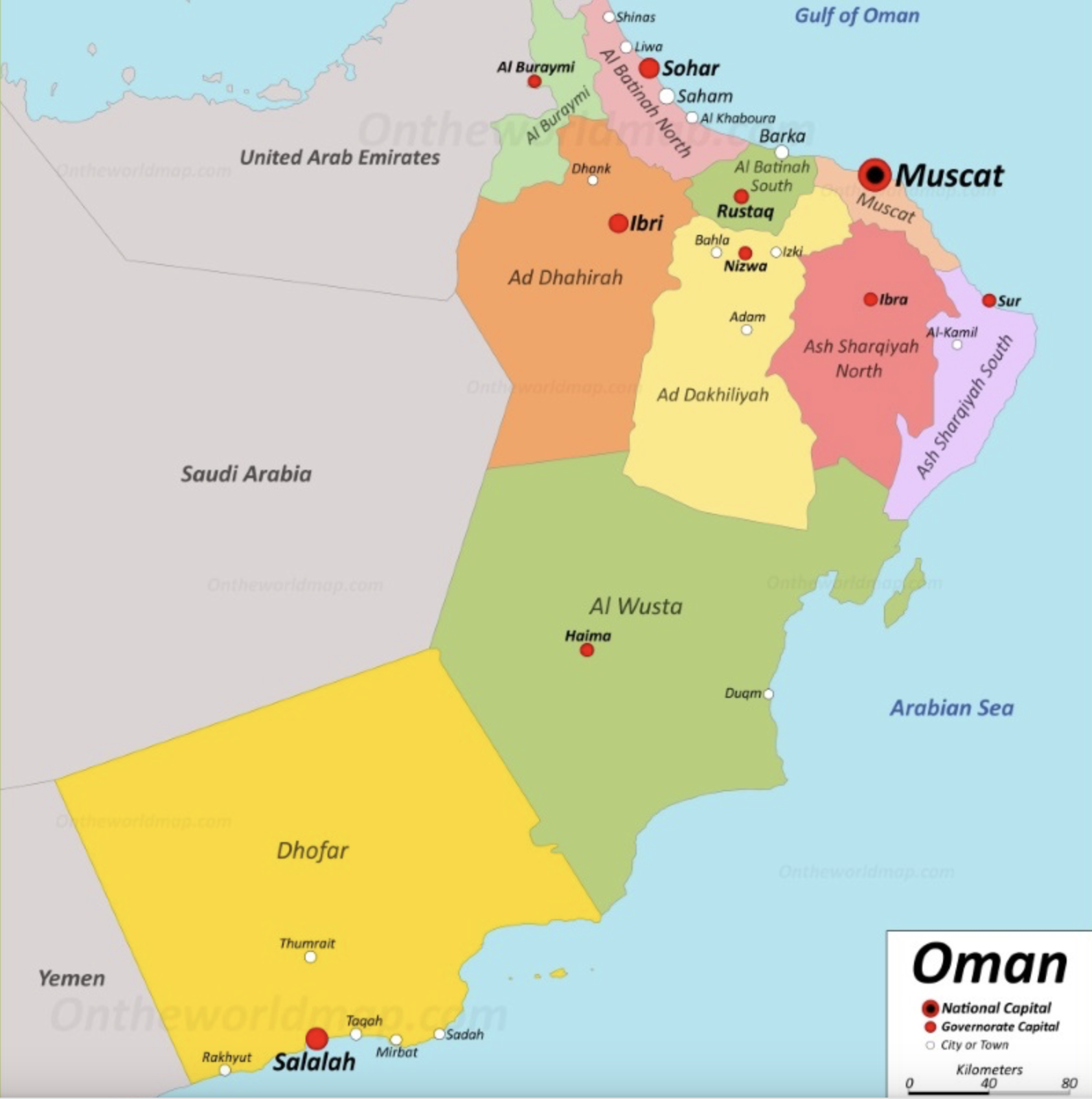
Image Credit: On the World Map
Best Time to Visit Salalah, Oman
Visiting Oman and the wider Gulf region in the summer months is generally best avoided because of the extreme heat. Yet, Salalah stands out as an exception! During the summer months of late June to early September, Salalah attracts numerous visitors thanks to its unique climate.
Situated on the southern coast of Oman, where the Arabian Sea meets the Indian Ocean, the city is impacted by the cooling influence of the Indian Ocean monsoon. This monsoon season is referred to as Al Khareef.
During this period, Salalah becomes even more magical when it transforms into a verdant paradise. Temperatures typically range between 20°C to 25°C. The city is enveloped in mist, rain, and fog, bringing the lush greenery to life and giving rise to stunning waterfalls.
It’s no surprise that Salalah draws many visitors from across Oman and neighboring countries, all seeking a reprieve from the intense summer heat. The downside of visiting during Al Khareef is the higher accommodation prices and dealing with larger crowds.
Another great time to visit is between November and March when Salalah experiences mild winter temperatures ranging between 20°C to 33°C . This period is perfect for outdoor activities like hiking, water sports, relaxing by the beach or exploring historical and archeological sites. I visited in November, and while the weather was more bearable, I found that the humidity was still quite high.
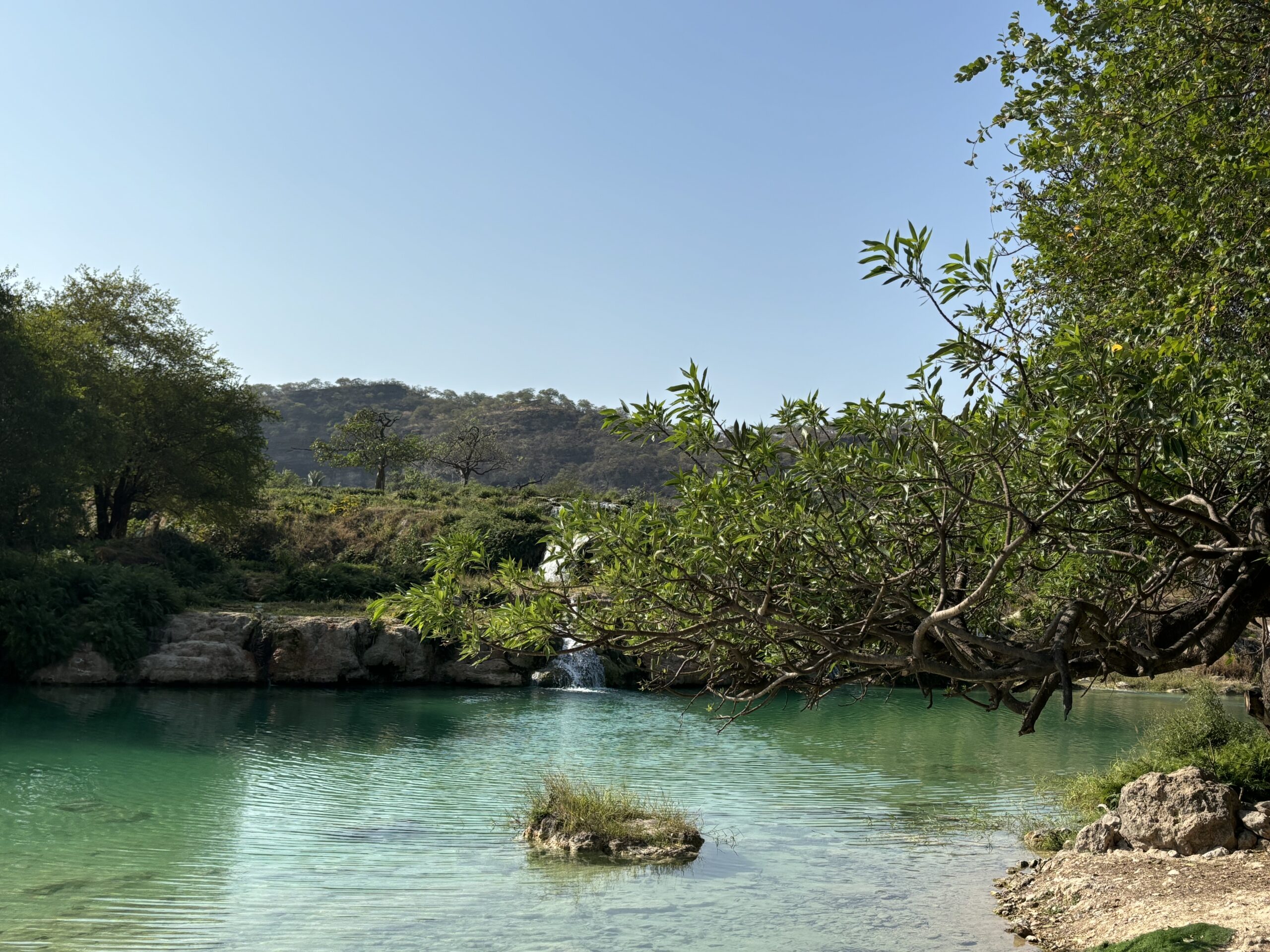
Salalah’s beautiful nature – Wadi Darbat
How to Get Around Salalah, Oman
Most visitors to Oman will land in Muscat. The fastest way to get to Salalah is by flying to Salalah International Airport (SLL). I wouldn’t recommend driving the 1,000+ kilometers from Muscat unless you plan to break up the journey with stops in various cities and towns along the way. Since we were travelling from Kuwait, we flew with Qatar Airways, connecting via Doha, which made for a full travel day due to the long layover.
Once in Salalah, renting a car is a convenient and affordable way if you want the freedom to explore at your own pace. Public transportation options are quite limited. Taxis are another option, and that’s what we used for most of our stay.
Salalah doesn’t have Uber or Careem and instead has local apps like Otaxi, Mwasalat and OmanTaxi. Although these apps are often blocked if you try to request a taxi from the hotel. Most hotels have arrangements with taxi drivers, but be prepared to pay higher fares when booking through them.
We found it easiest to hail taxis directly from the street and negotiate a price before getting in. One of the drivers offered reasonable rates, so we saved his number and he took us around various sites in the city and surrounding area. Another great way to explore Salalah is by booking a private or group guided tour.
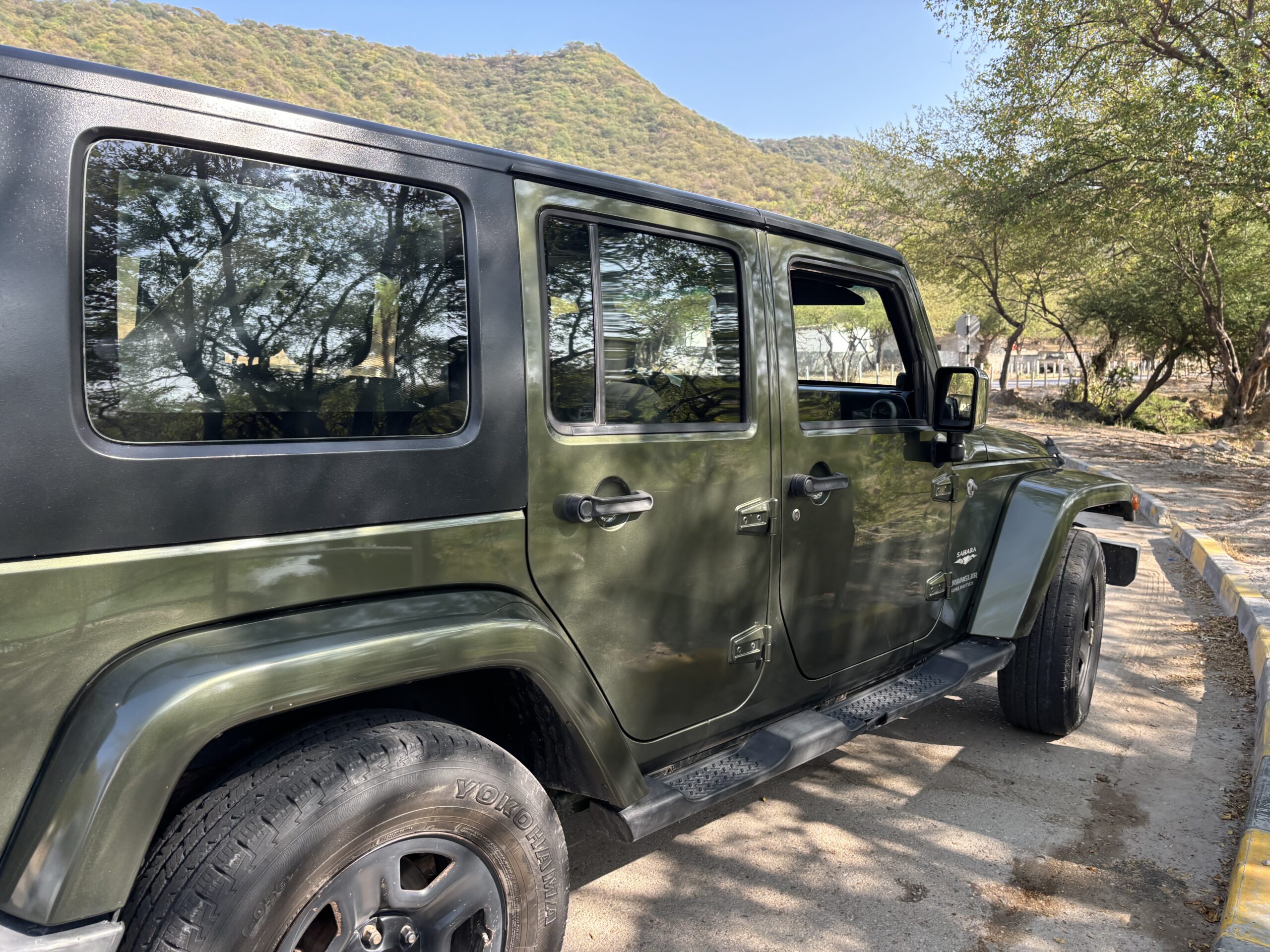
Jeep adventure!
Things To Do – City of Salalah
When planning your trip itinerary to Salalah, you can divide up your days by exploring different parts of Salalah and its surrounding area. You can start by immersing yourself in the heart of the city, for a taste of its culture, markets and historical landmarks.
Admire the Architecture of the Sultan Qaboos Mosque
When in Salalah, if there is one mosque you must visit, it’s the Sultan Qaboos Mosque. Named after the former Omani Sultan Qaboos bin Said al Said, who was born in Salalah and ruled Oman for around five decades. Opened in 2009, this mosque showcases its modern Islamic architecture, making it a worthwhile visit, regardless of religious background.
While it may not be as large as the Sultan Qaboos Grand Mosque in Muscat, it is the biggest mosque in Salalah and the Dhofar region, accommodating up to 5,000 worshippers. We had the chance of praying the noon prayer there during our visit. It’s open to non-Muslims for tours on Saturdays to Thursdays, between 8 a.m. to 11 a.m.
Tip: Don’t miss it at night when the mosque is beautifully illuminated to capture great exterior photos!

Image Credit: mhfahdi on Instagram – Sultan Qaboos Mosque at night
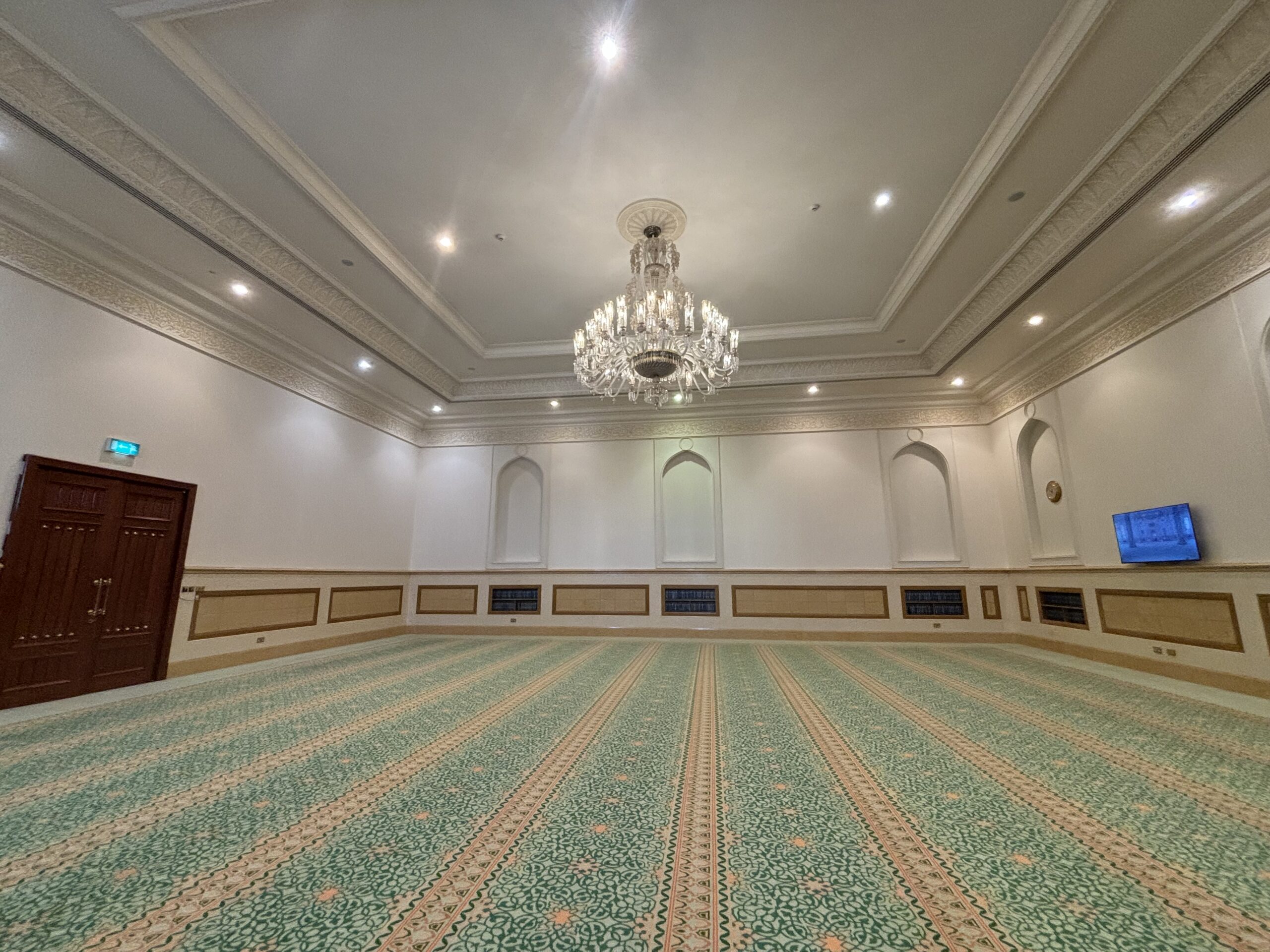
Sultan Qaboos Mosque – Women’s Prayer Area, Salalah, Oman
Delve into the History of Frankincense
For a deeper understanding of Salalah’s heritage, include a visit to the Museum of the Frankincense Land to learn about this special resin and Oman’s history. This museum sits next to Al Baleed Archeological site, UNESCO world heritage. The museum is divided into two halls.
The Maritime Hall features wooden Omani boats and navigation instruments. Inside the History Hall is where you’ll find artifacts showcasing this region’s archeological heritage. This includes artifacts from the nearby archeological sites, including Al Baleed, Sumhuram and Ash Shisr.
An interesting section in the History Hall includes a manuscript of the Holy Quran and a copy of the letter sent by the prophet Mohammed (Peace Be Upon Him) addressed to the people of Oman from the 8th century. Another highlight is the section dedicated to frankincense, covering its cultivation process, uses and ancient trade routes that carried this precious resin across the world.
As you exit the museum, don’t miss the basket of small frankincense bags that you can take as a souvenir. Outside the museum, you’ll find frankincense trees growing there.
Tip: the ticket to the museum includes access to the Al Baleed Archeological site next door. Visit later in the day when the weather cools down since its outdoors and not air conditioned like the museum.
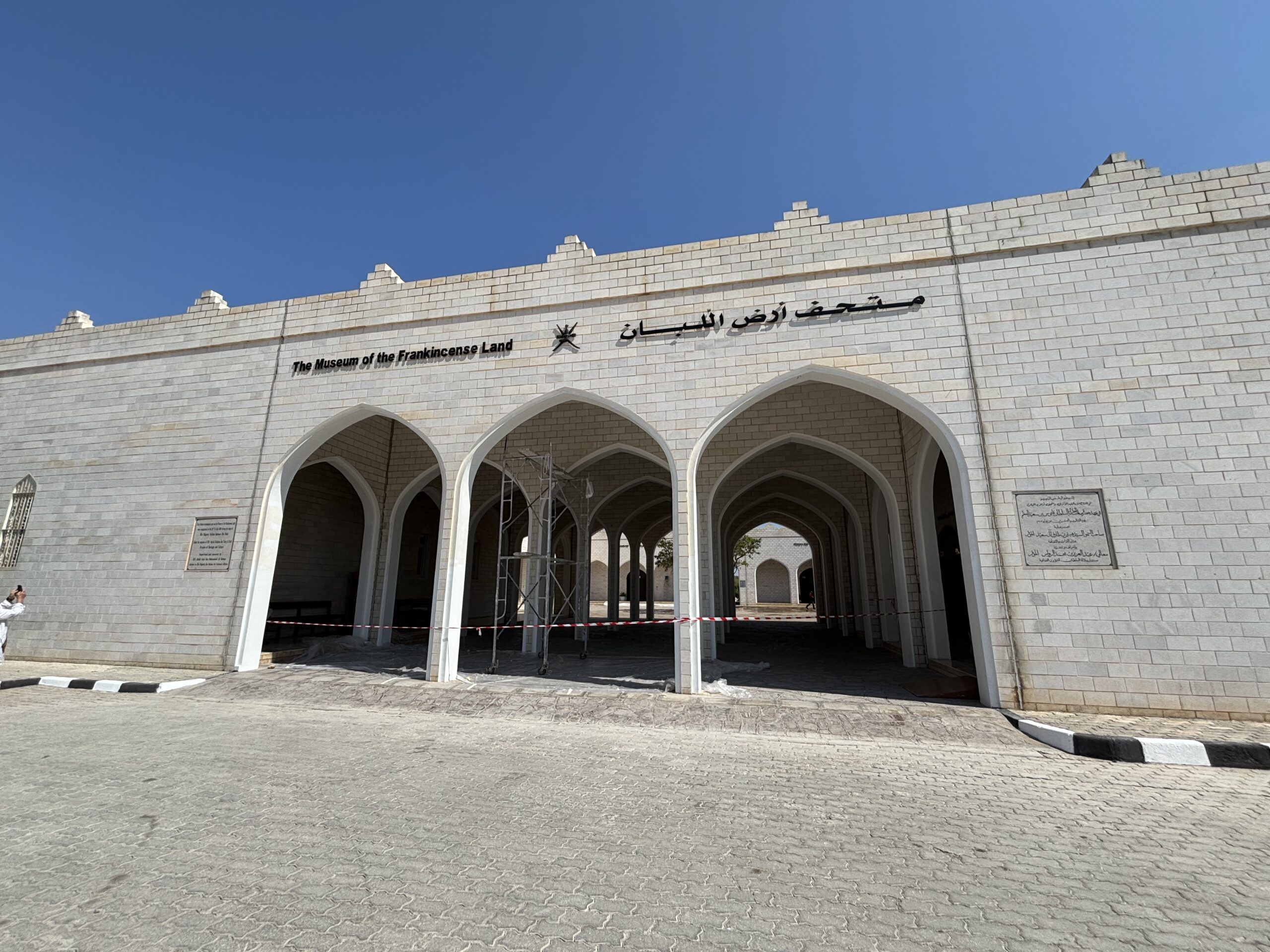
Museum of the Frankincense Land, Salalah
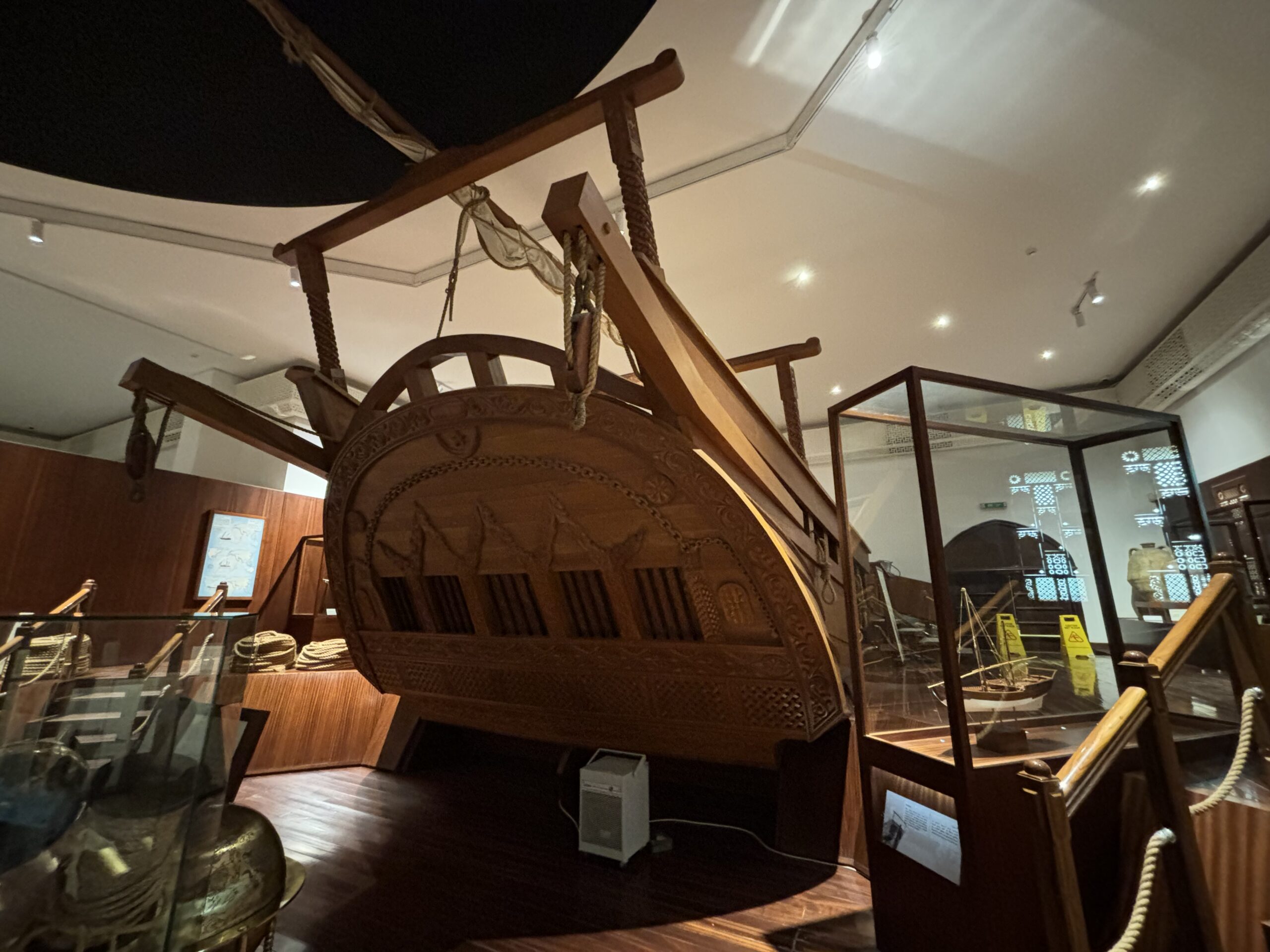
Maritime Hall: Omani wooden boats
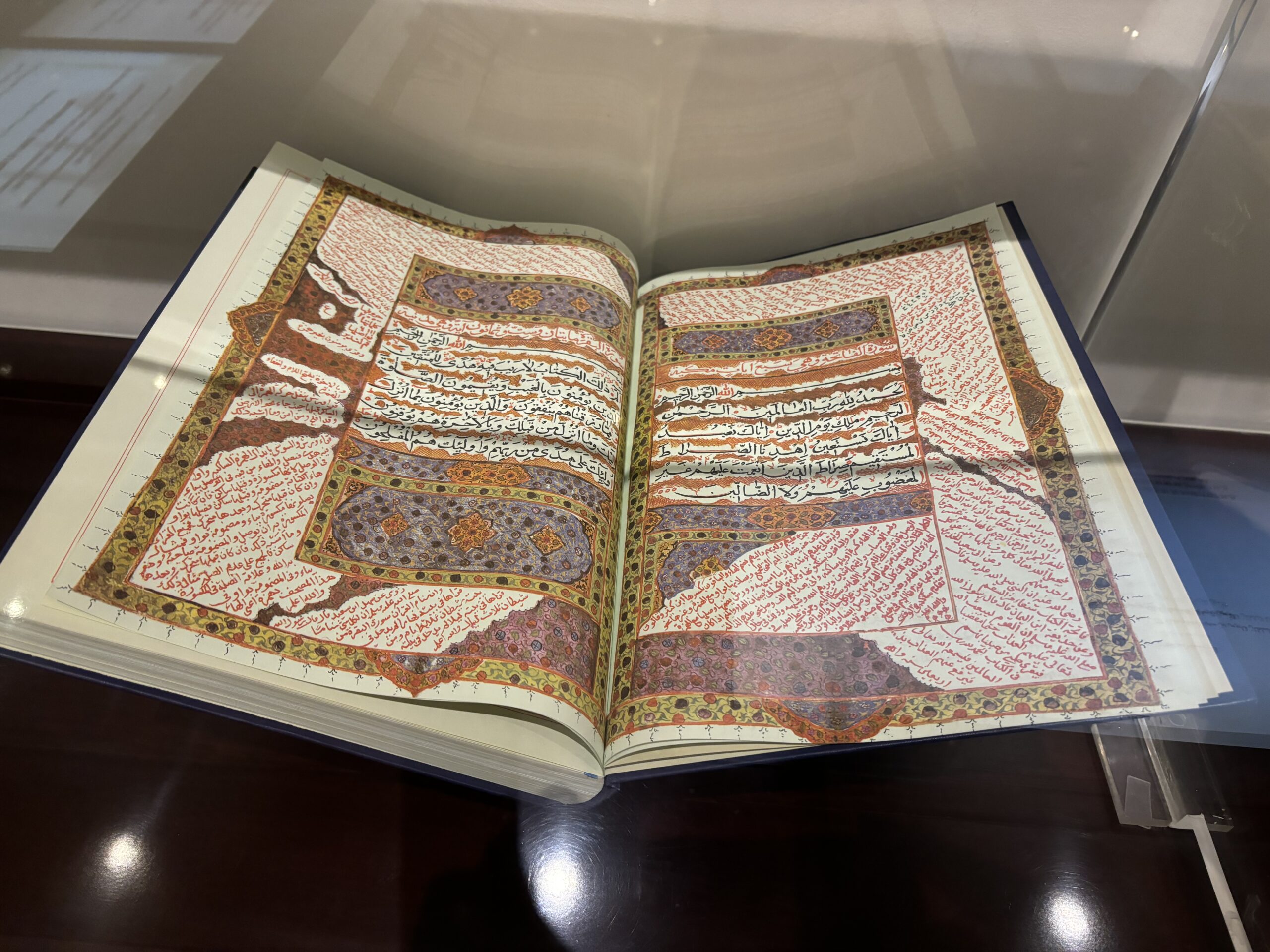
History Hall: Manuscript of Holy Quran
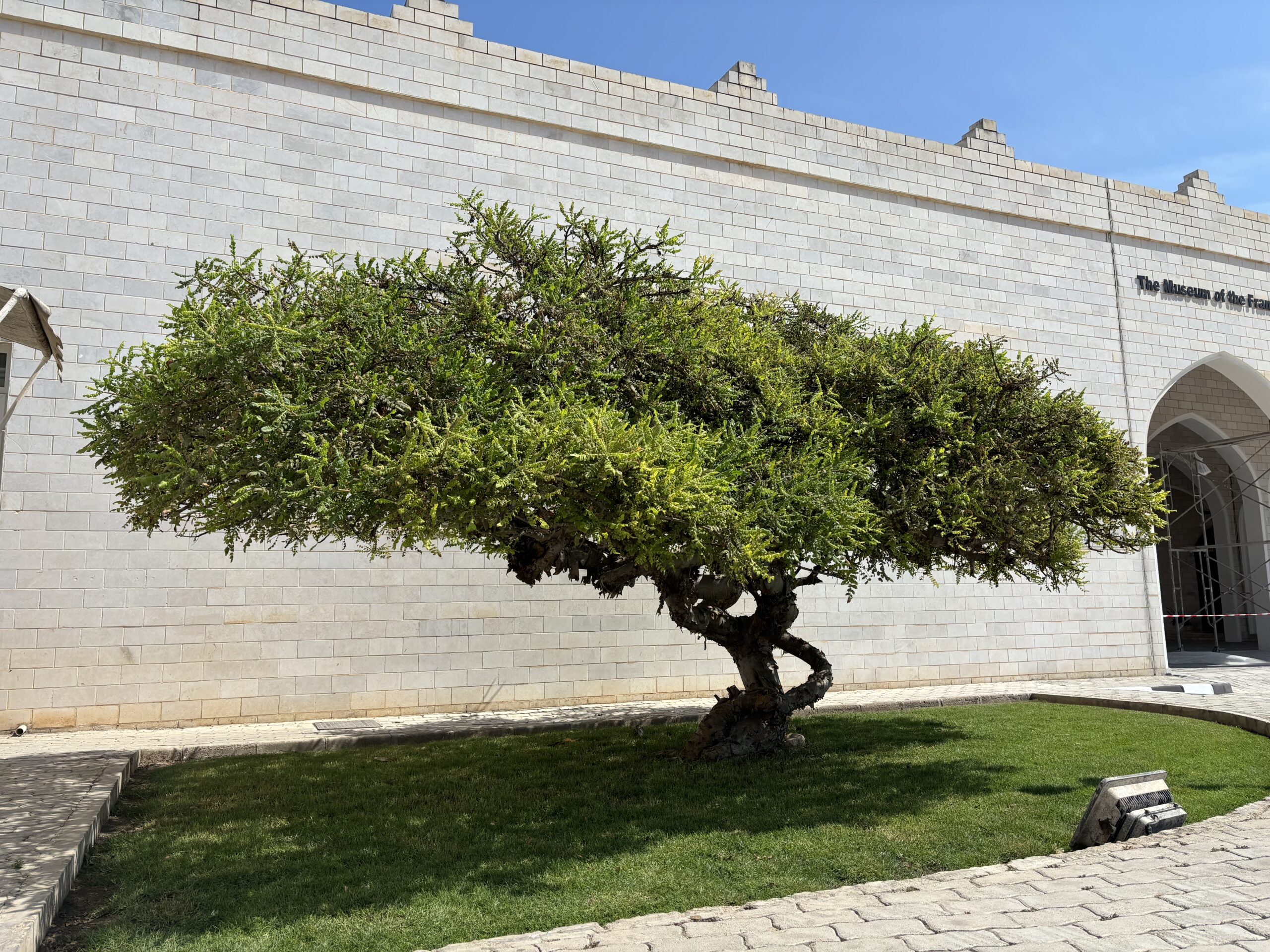
Frankincense Tree, Salalah, Oman
Shop at Al Husn Souq in Haffa
For a taste of the local culture, head to Al Husn Souq in the Haffa district, sometimes referred to as Al Haffa Souq. It’s an open air market and the biggest one is Salalah, though much smaller when compared to Muscat’s Al Mutrah Souk. This is the place to go to buy your souvenirs, and most importantly frankincense.
You’ll find different types of frankincense sold in the market, with “hawjari” known as the best one. Besides burning this incense for a nice aroma scent, they sell a range of frankincense-infused products like soaps, massage oils, cleansers and lotions.
They also sell Omani traditional clothing, such as the “Kumma”, a cap worn by Omani men that come in different patterned styles and colours. For fragrance lovers, you’ll find many scents, including “oud” which is common staple in the Gulf region. This souk closes in the afternoon, so it’s best to visit it in the evening. Just across the souq, a new more modern souq has recently opened. It was surprisingly empty when we visited.
Tip: pair your trip to the souk with a stop at Al Husn Palace, which is nearby. While you can’t go inside, you can enjoy the architecture from the outside.
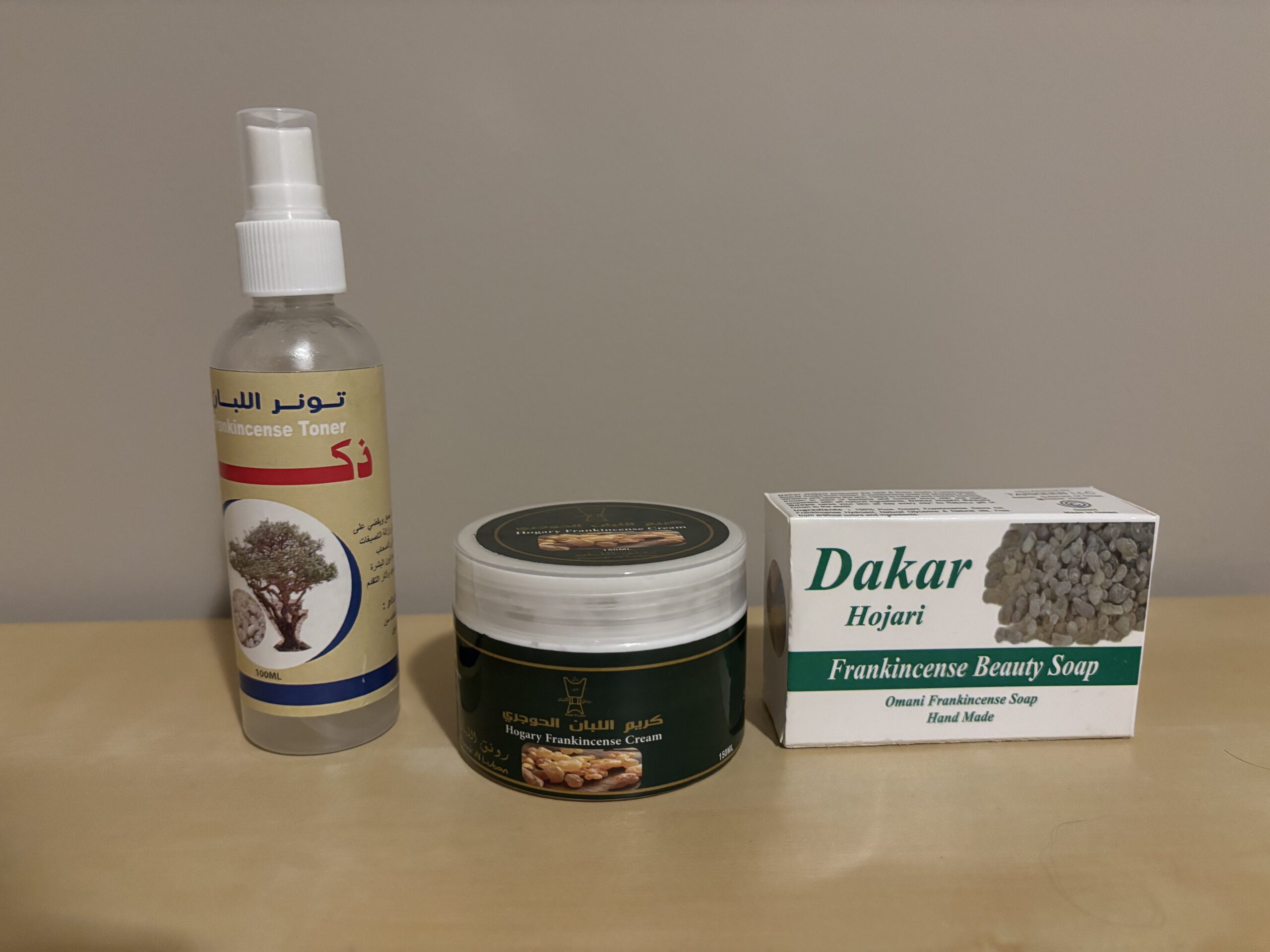
Frankincense beauty products, Al Husn Souq, Salalah
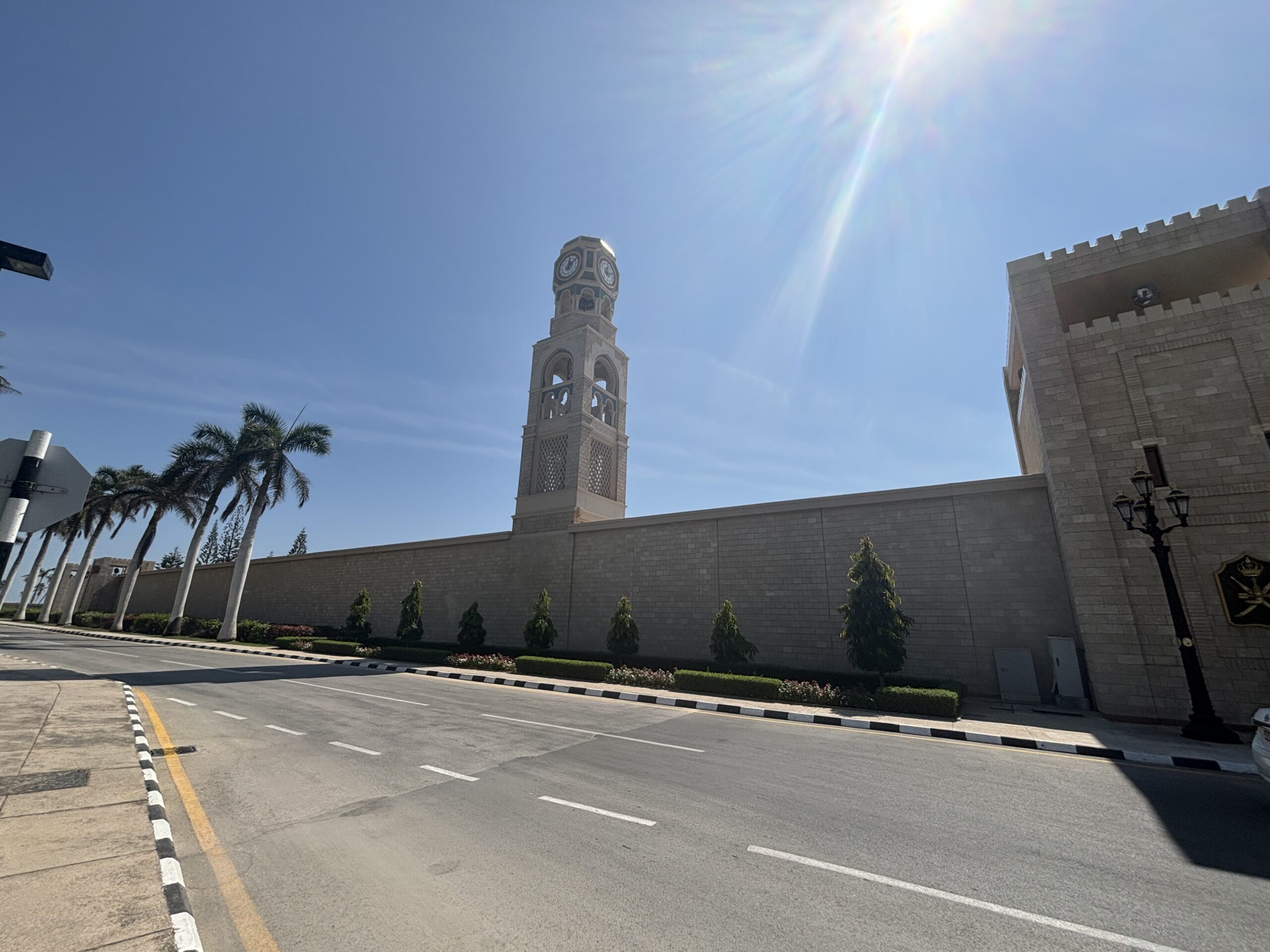
Al Husn Palace, Salalah
Indulge in Coconuts
When is Salalah, be sure to stop by one of the roadside fruit huts. Salalah is particularly known for coconuts and bananas. There’s nothing quite like enjoying the refreshing taste of a freshly cracked coconut.
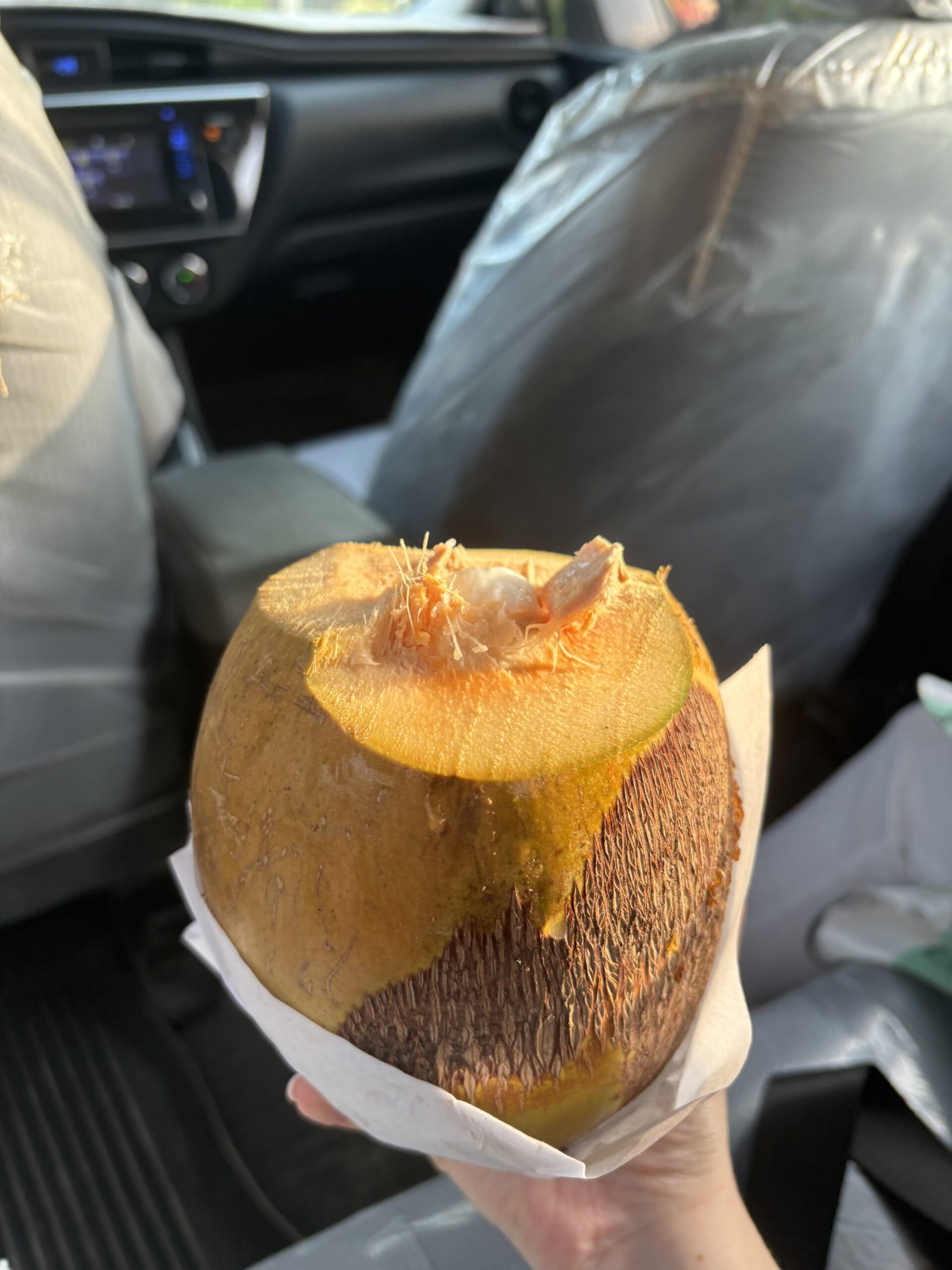
Refreshing coconut delight in Salalah, Oman
Things To Do – East of Salalah
Towering mountains, deep sinkholes, cliffs, waterfalls, roaming camels and picturesque views! These are the things you’ll be rewarded with when you venture east of Salalah as you explore its diverse terrain. We hired a private tour guide with a 4×4 and this turned out to be my favourite part of our trip in Salalah 🙂
Explore the Enchanting Wadi Darbat
Known as the jewel of Salalah, Wadi Darbat is a must-see destination. Located about 30 kilometres east of Salalah, it’s actually closer to the village of Taqah. Most visitors that come to Salalah, will make a stop here.
Wadi is Arabic for valley, and Wadi Darbat is the most well-known in the Dhofar region. We first visited the Wadi Darbat waterfalls. There were two of them and they were quite small. During Khareef season, the waterfalls are bigger, with some reaching heights of up to 100 meters.
Nearby, you’ll find Wadi Darbat Park, where you can enjoy different activities in the canal. From boat rides to paddle boating and kayaking, there’s plenty to do. This valley offers ample views of Jabal (mountain) Al Qara. If you’re in the mood for something more relaxed, there’s a café where you can enjoy a coffee while soaking in the beautiful surroundings.
While it was lovely, Wadi Darbat was absent of the numerous cascading waterfalls that arise during Khareef season during our visit. On the positive side, we had the place almost entirely to ourselves.
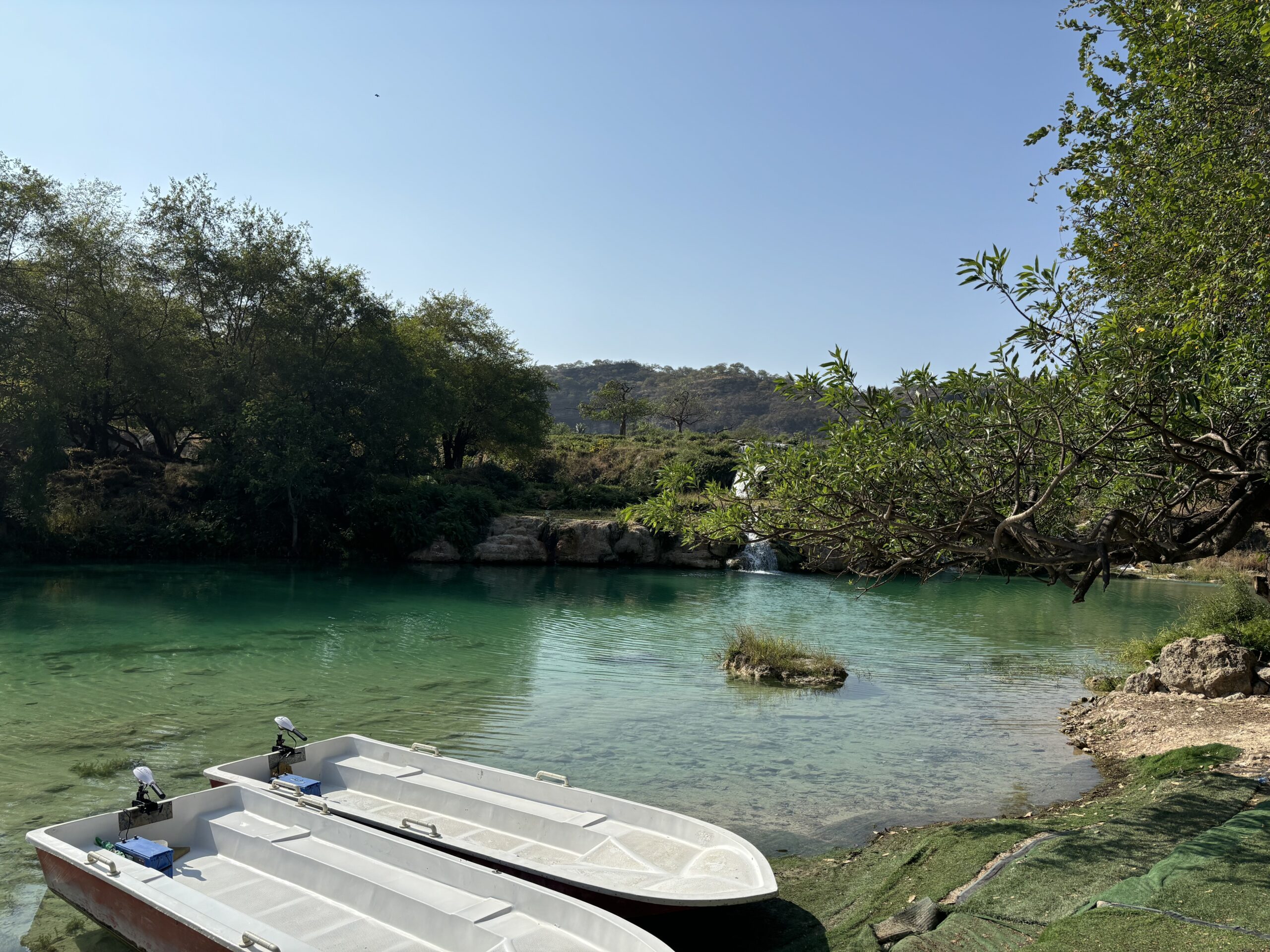
Wadi Darbat, Salalah, Oman
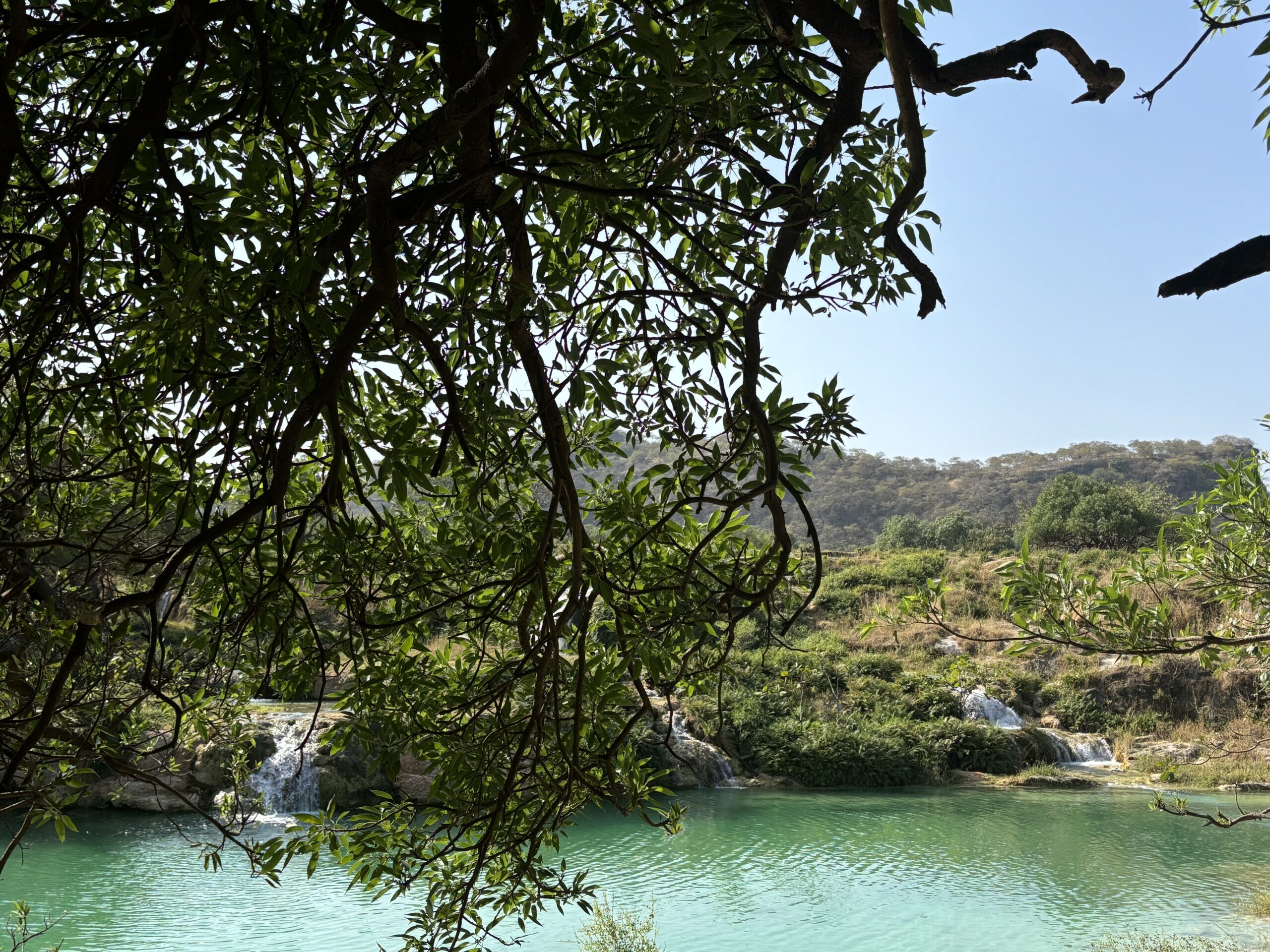
Wadi Darbat Waterfalls
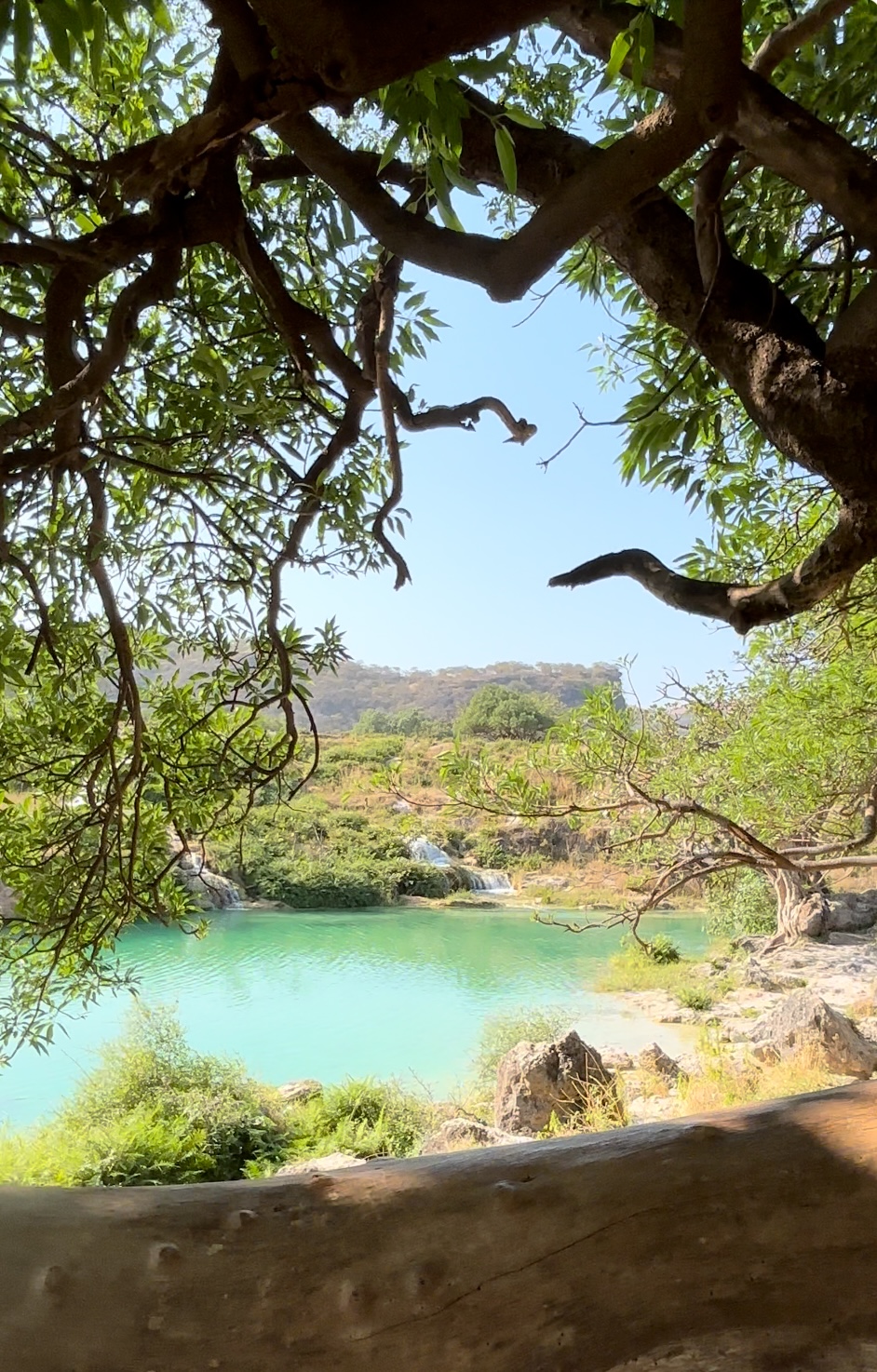
Scenic Salalah
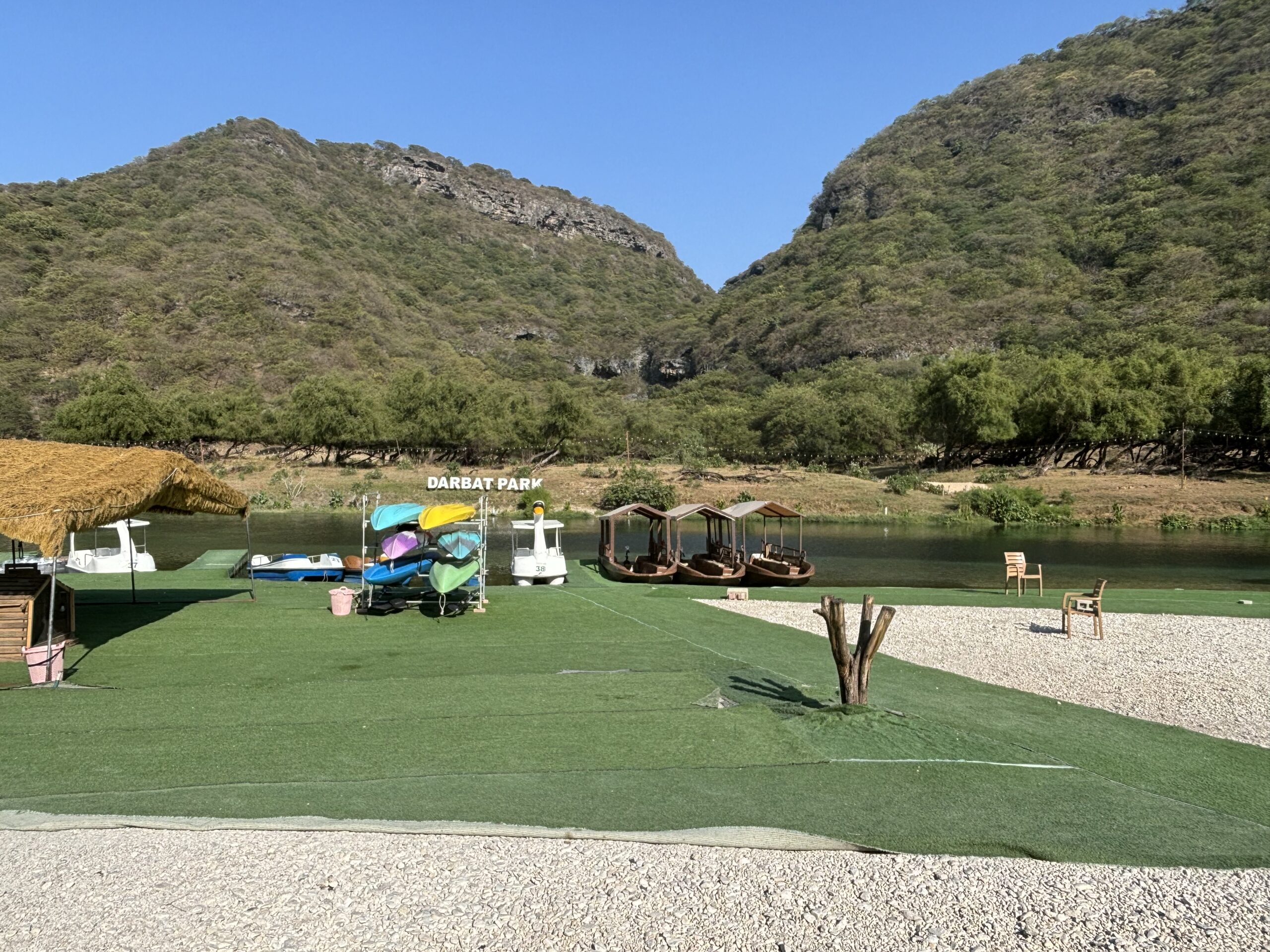
Wadi Darbat Park
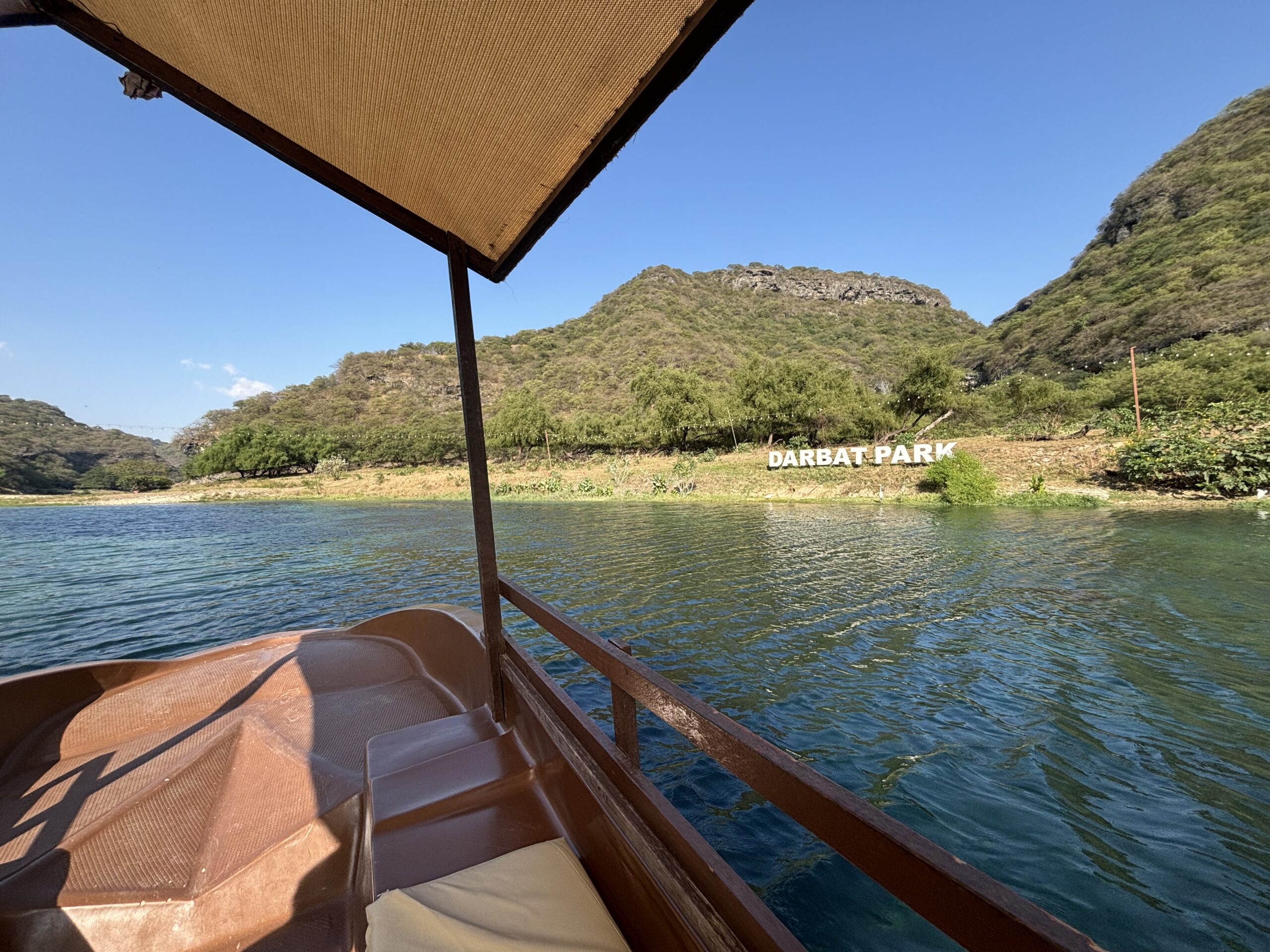
Boat ride in Wadi Darbat canal
Look Down the Tawi Attair Sinkhole
One of the deepest sinkholes in Dhofar region is the Tawi Attair Sinkole, plunging around 200 meters deep. The picture I took doesn’t quite capture its vastness, but believe me, it’s incredibly deep! On our drive there, we passed herds of cattle and saw camels that you’ll frequently see when you’re up in the mountains.
We also visited another smaller sinkhole. It was much smaller in depth but had water where you can swim or take a dip. The name of it escapes me!
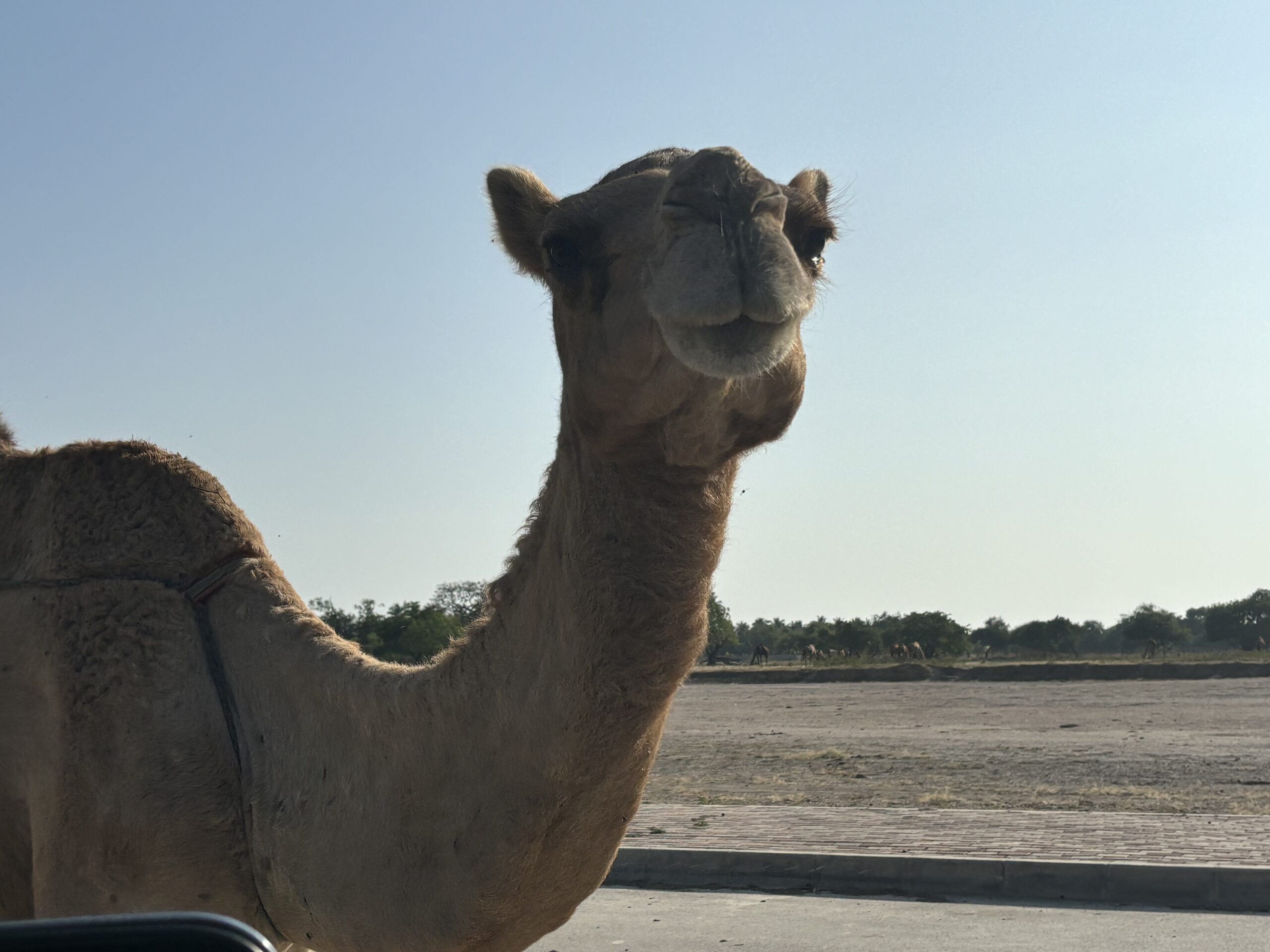
Up close and personal
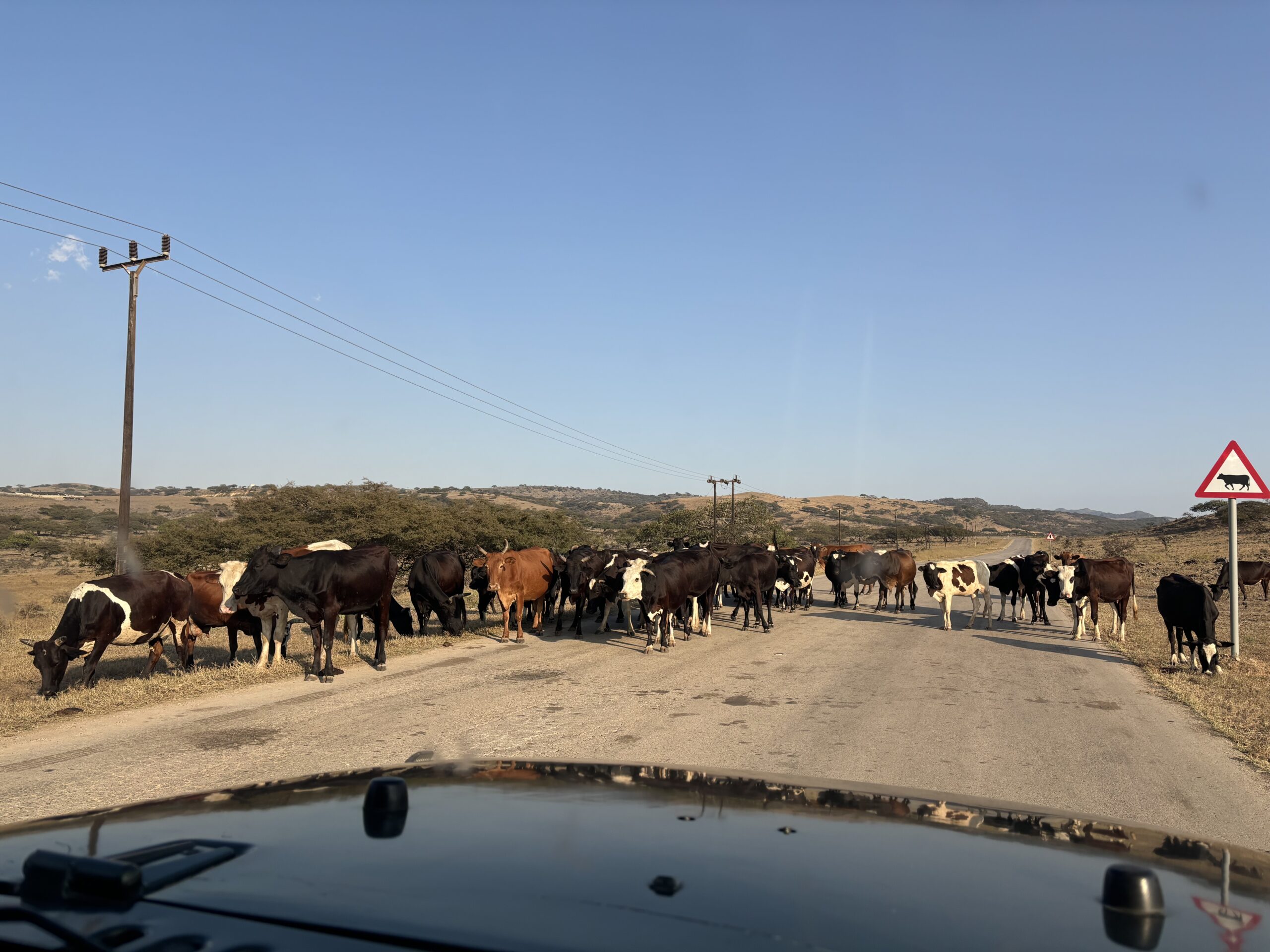
Cattle
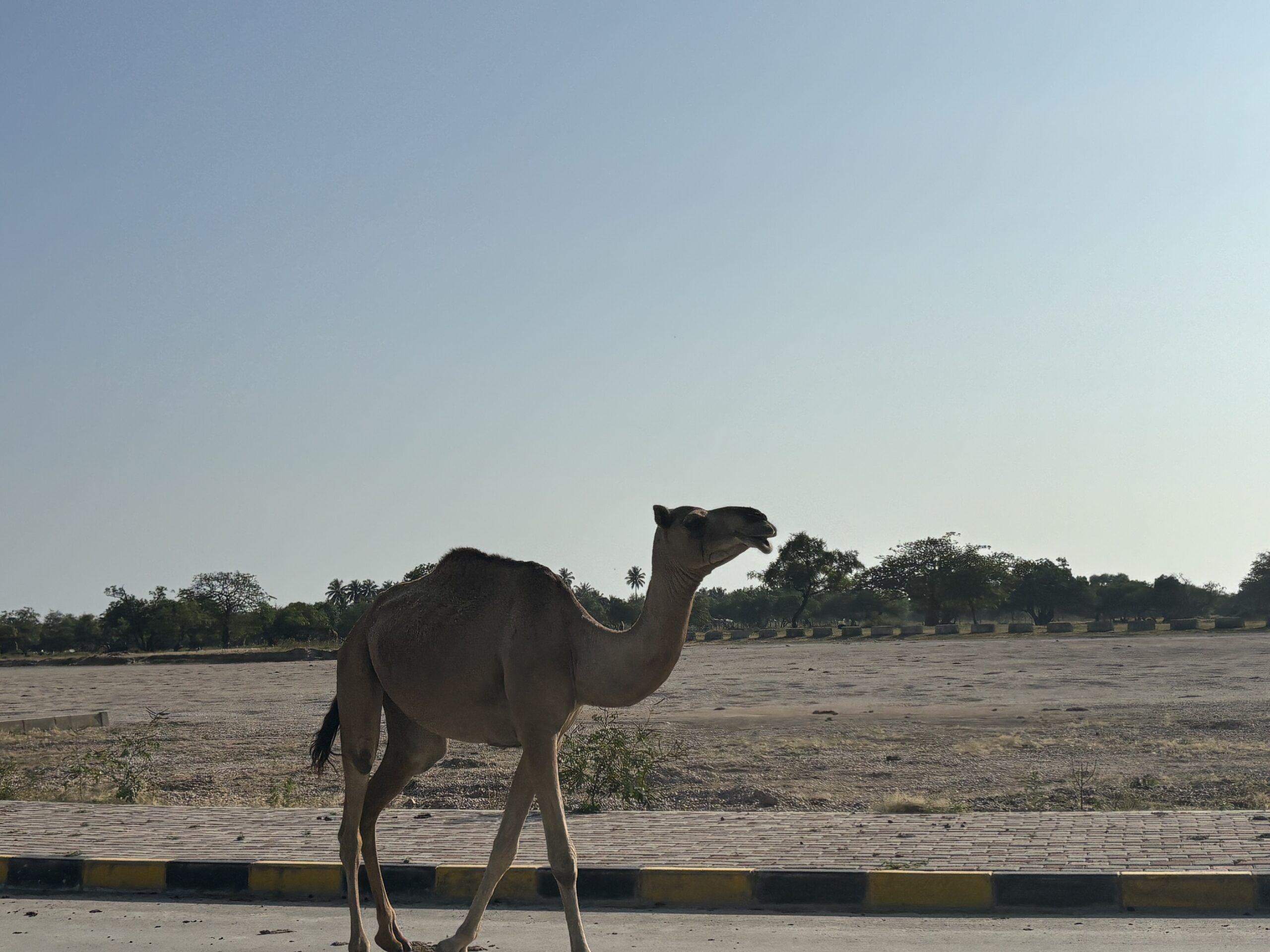
Check me out
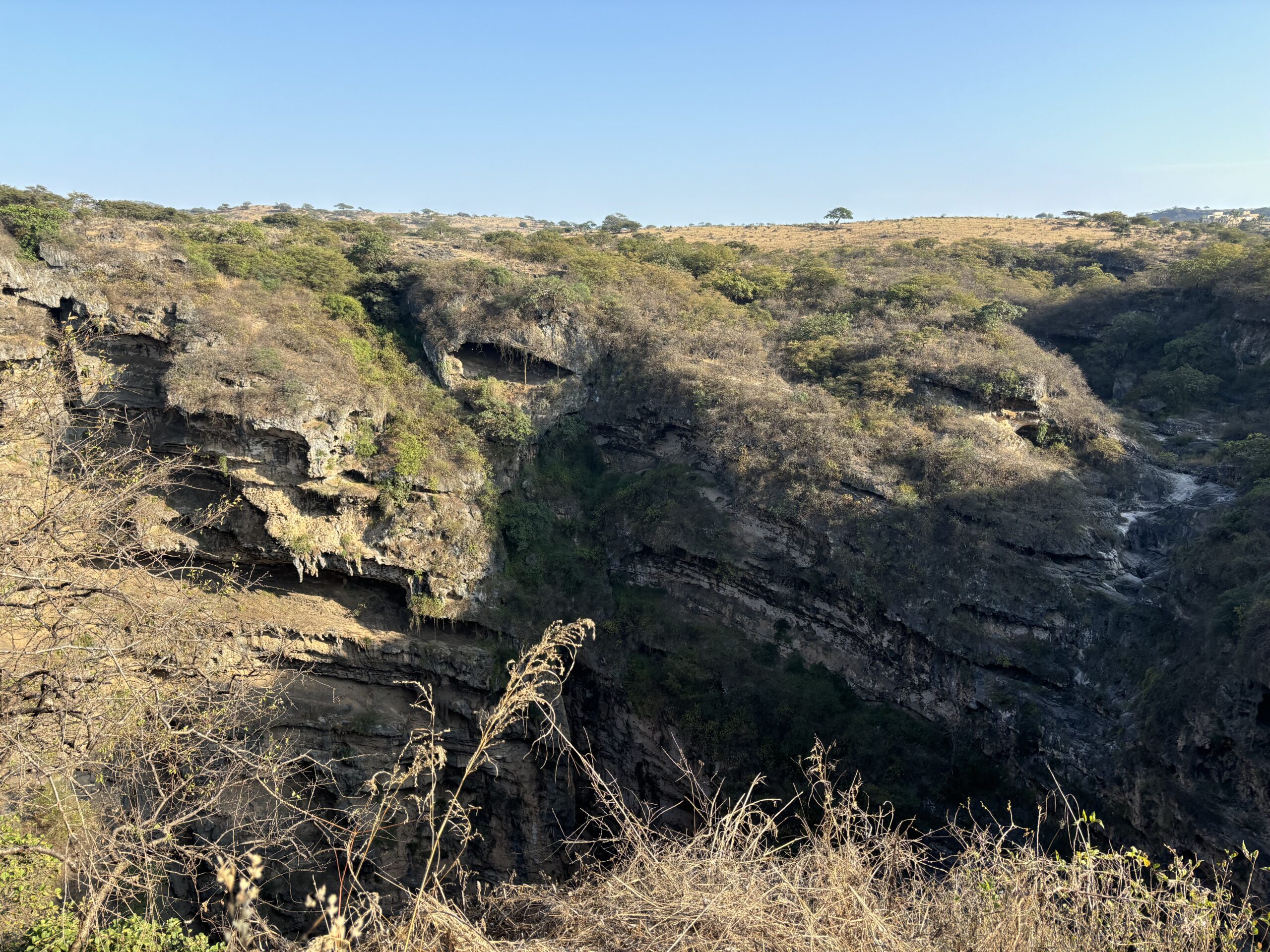
Tawi Attair Sinkole
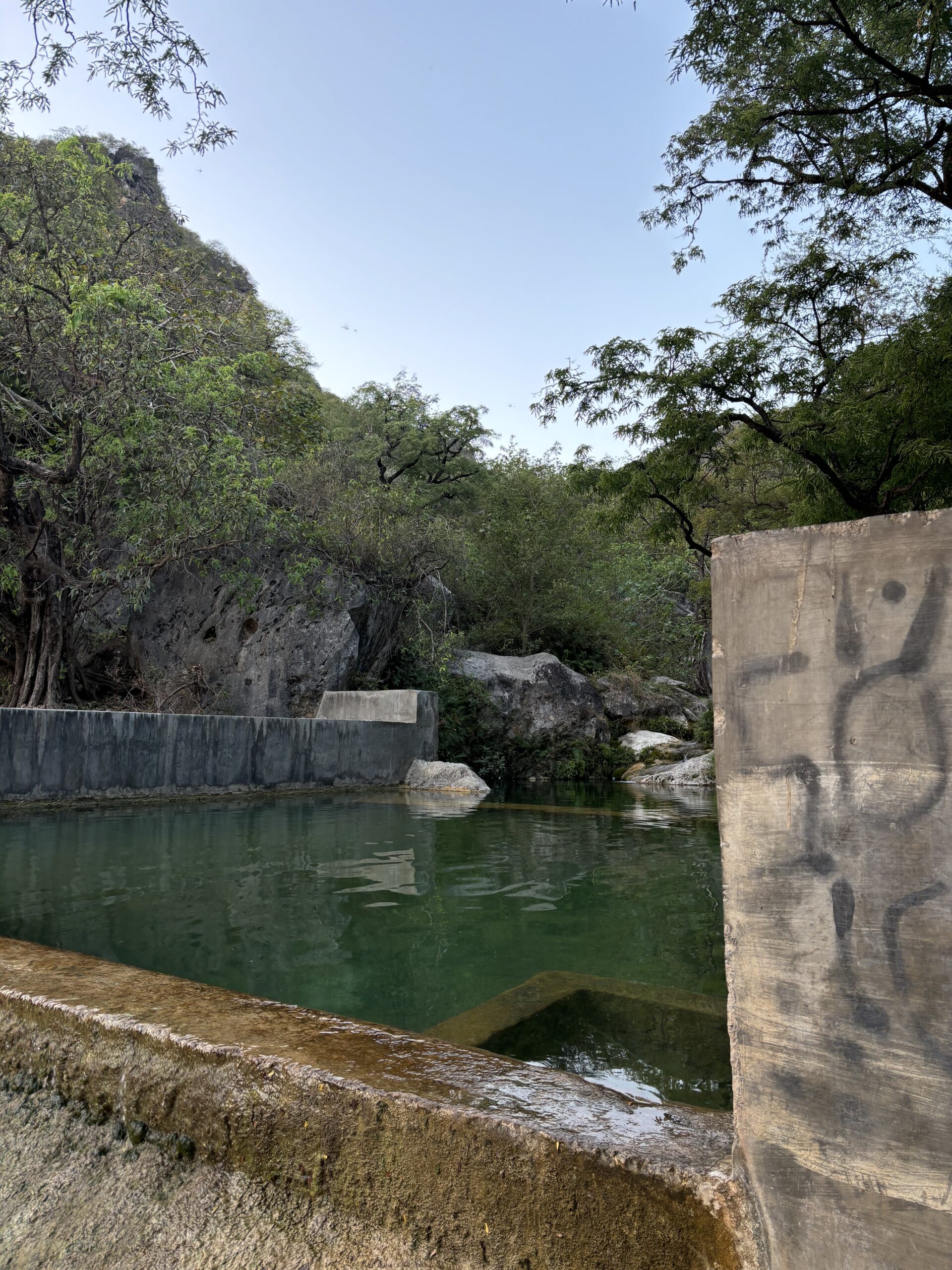
Dhofar region – Sinkhole
Reach the Peak of Dhofar at Jabal Samhan
For incredible viewpoints that will take your breath away, head to Jabal Samhan. It holds the highest view point in the Dhofar region. For those feeling adventurous, there are several hiking trails here.
Our tour guide drove us to this point in his jeep to enjoy the scenic views. This mountain has sweeping views of the Arabian Sea and coastal plains below. If you’re lucky, you may see the mountain enveloped in a bed of clouds and feel like you’re standing on top of the clouds. This is weather dependent and unfortunately wasn’t the case during our visit.
He then drove us to another area on the mountain, which he joked was his secret place and we took in more incredible views. The cliff views are a perfect spot for photography.
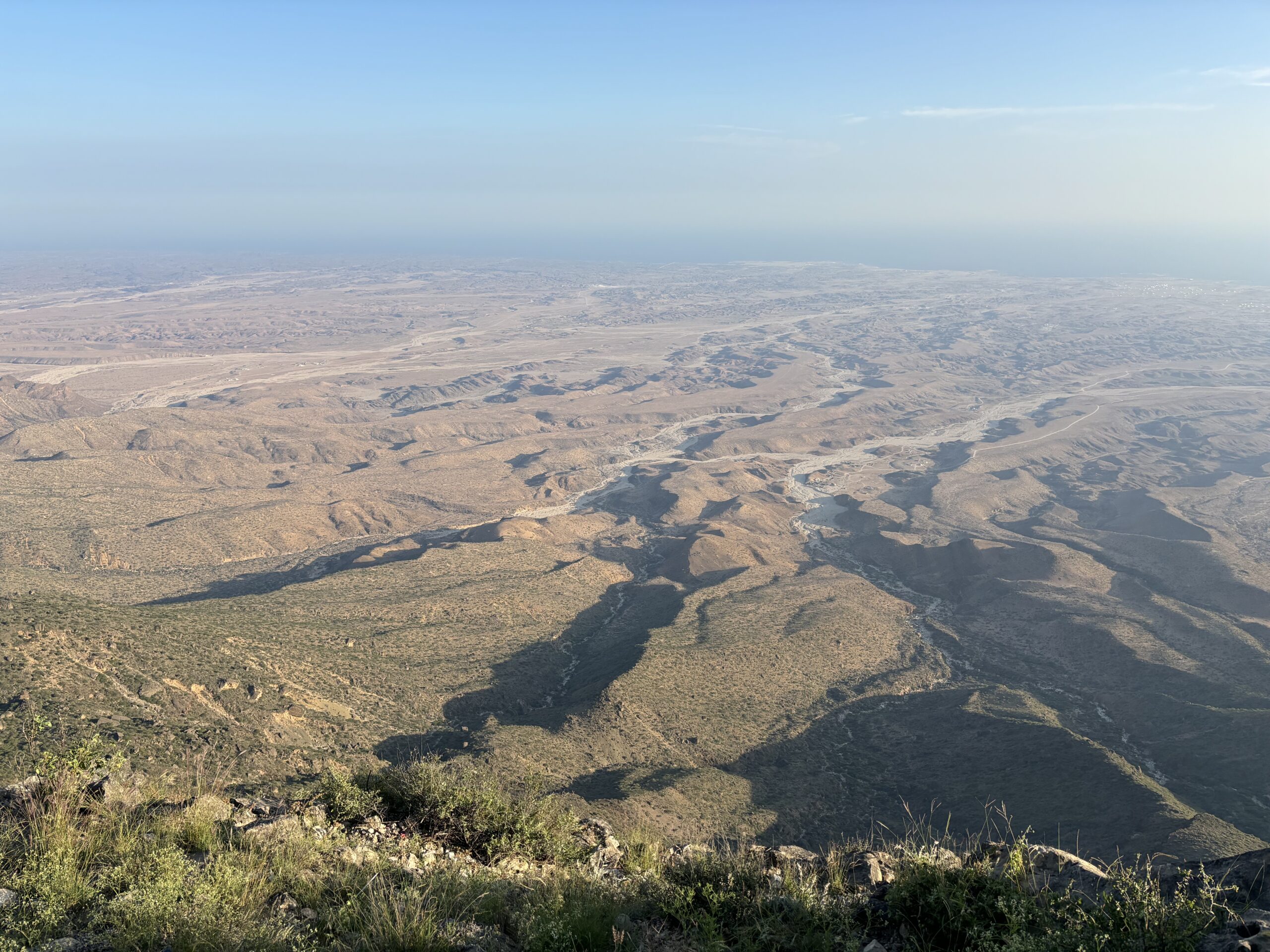
Views from Jabal Samhan
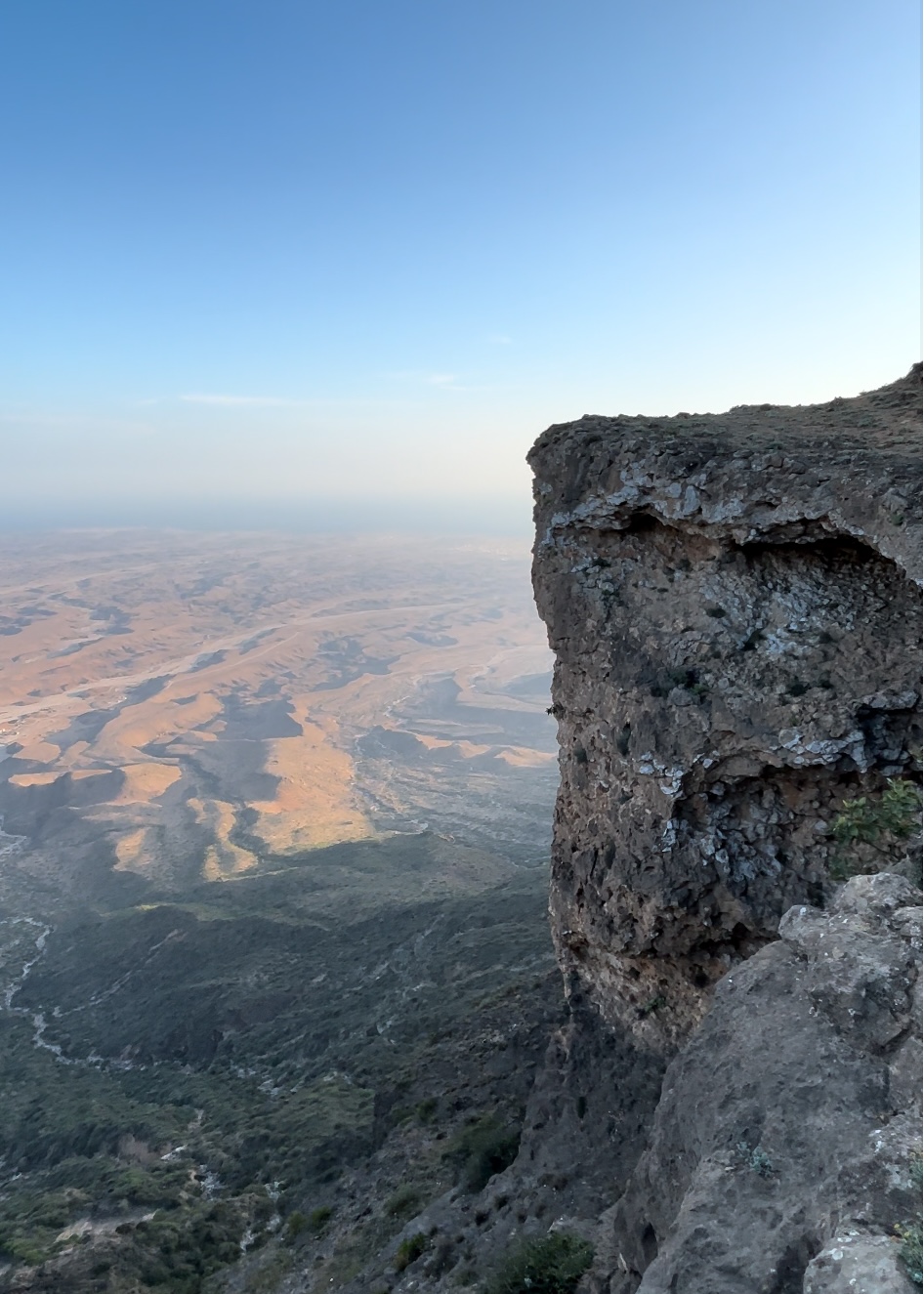
Cliff Edge Breathtaking Views
Immerse Yourself in Historical and Cultural Sites
After soaking in the natural wonders, it’s time to explore this region’s cultural heritage!
You can spend a half day exploring the fishing village of Taqah. Within the village sits Taqah Castle.
Built in the 19th century, this castle was the residence of Sheik Ali bin Taman Al Ma’shani, the grandfather of Sultan Qaboos’ mother. The interior of the castle is well-preserved and gives a glimpse into Oman’s heritage from the last century. Climb to the top for panoramic views of the village below. This sardine producing village also has a pristine white sand beach, just a short distance from the castle.
Nearby Taqah village is the Sumharam Archeological Site. It’s a UNESCO Heritage Site with ancient ruins of Sumhuram, referred to as Khor Rori. It used to be an old port city from the 3rd century BC. The small museum on site houses relics and other ruins from this ancient city.
Further east, head to the coastal town of Mirbat. This old town was known for its frankincense trade and horse breeding. Mirbat is filled with historical buildings, showcasing traditional Omani architecture, ruins and Mirbat Castle. This 14th century castle served to protect the town from Portuguese occupation. Today, it serves as a museum. Being a coastal town, it also boasts a white sand beach.
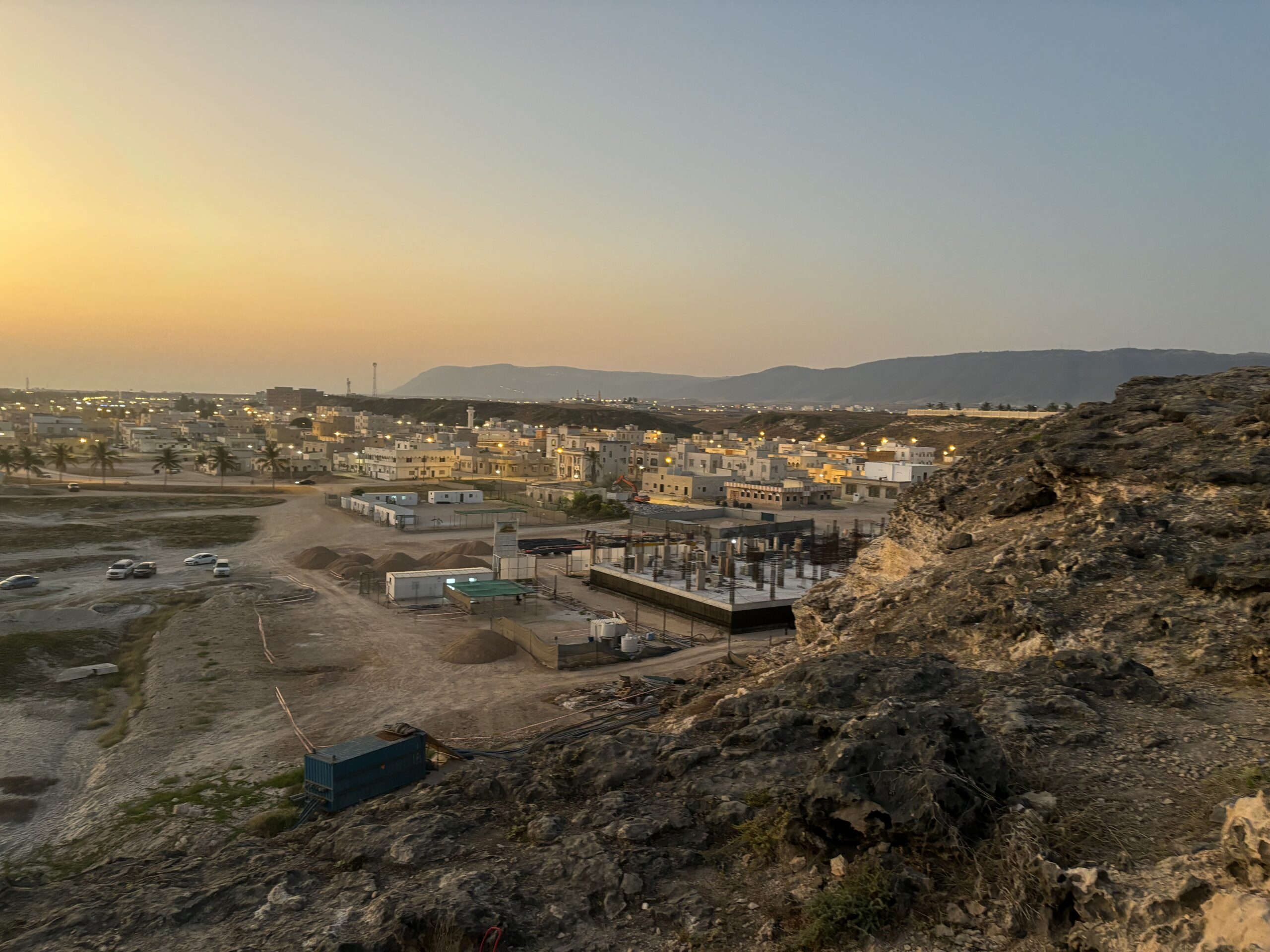
Mirbat old town view
Things To Do – West of Salalah
After an action-packed day exploring the eastern side of Salalah, it’s time to check out the other side. Heading west, you can experience a slower paced and more relaxing day. Starting with unwinding on one of the region’s most popular beaches, witnessing dramatic geysers (blowholes) and visiting an impressive cave.
Relax at Mughasil Beach, Blowholes and Manreef Cave
We hired a cab and headed west of Salalah to check out one of the most popular beaches in the Dhofar region, Mughasil beach. Besides the soft sands, you have the majestic mountains serving as a backdrop, making it great for photography and enjoying scenic views.
Admittedly, the real motivation for coming here was to check out the three geysers, Mughasil Blowholes, on the west side of the beach. Some refer to them as Mughasil Natural Fountains. These geysers shoot water up from the rocks. Sometimes blasting as high as 28 meters!
When we visited the waters were calm and there were no water jets so it was a bit of disappointment. If the tides are high or if visiting during Khareef season, you’re more likely to catch this amazing natural phenomenon in full force.
Overlooking the beach and blowholes is Manreef Cave, made up of limestone formations. The cave is a peaceful spot where you can sit on the benches, relax, and enjoy the stunning beach views in the cool shade. We were lucky to visit when there were few tourists, allowing us to experience the serenity of the area in peace.
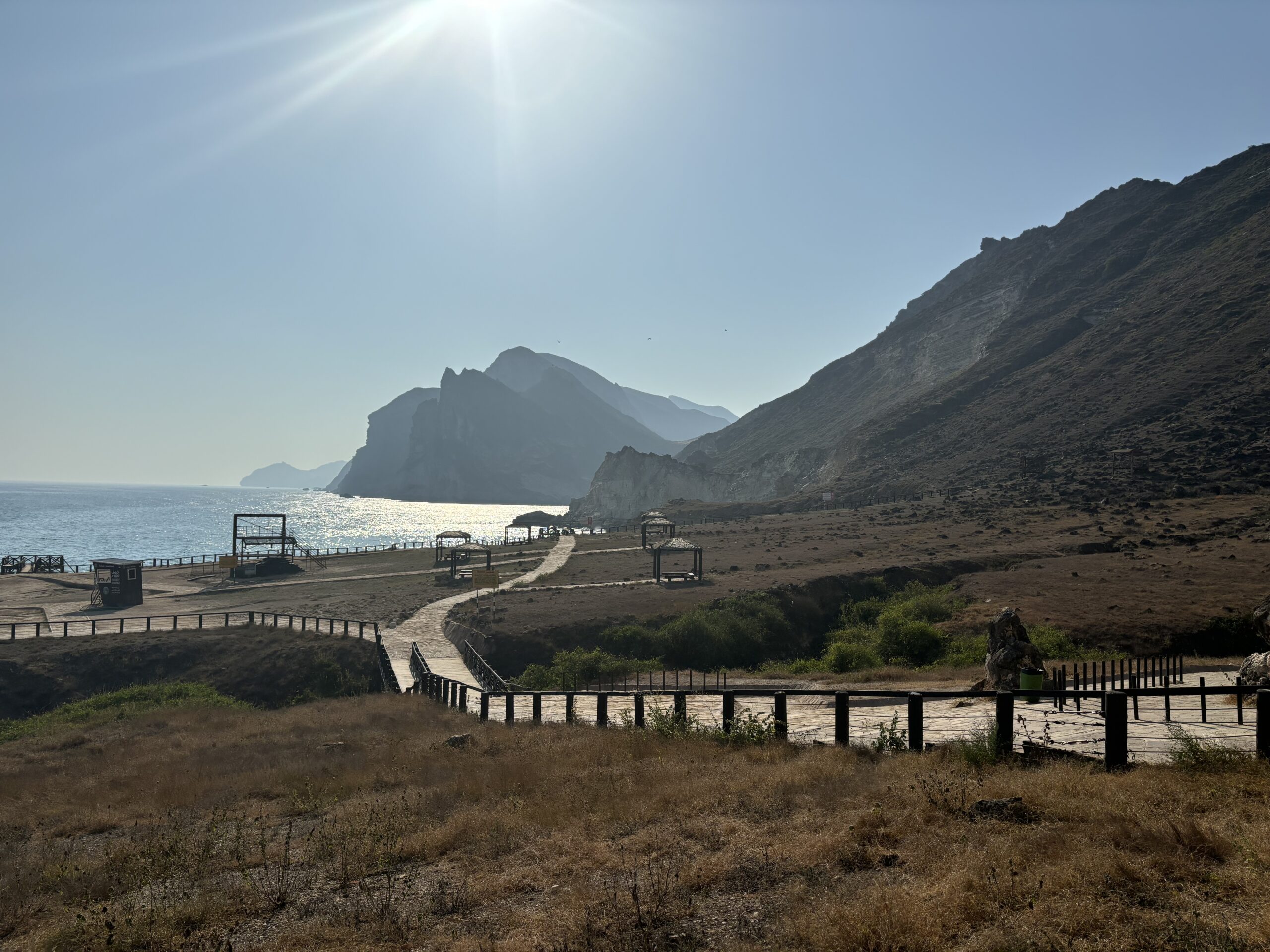
Mughasil Beach, Oman
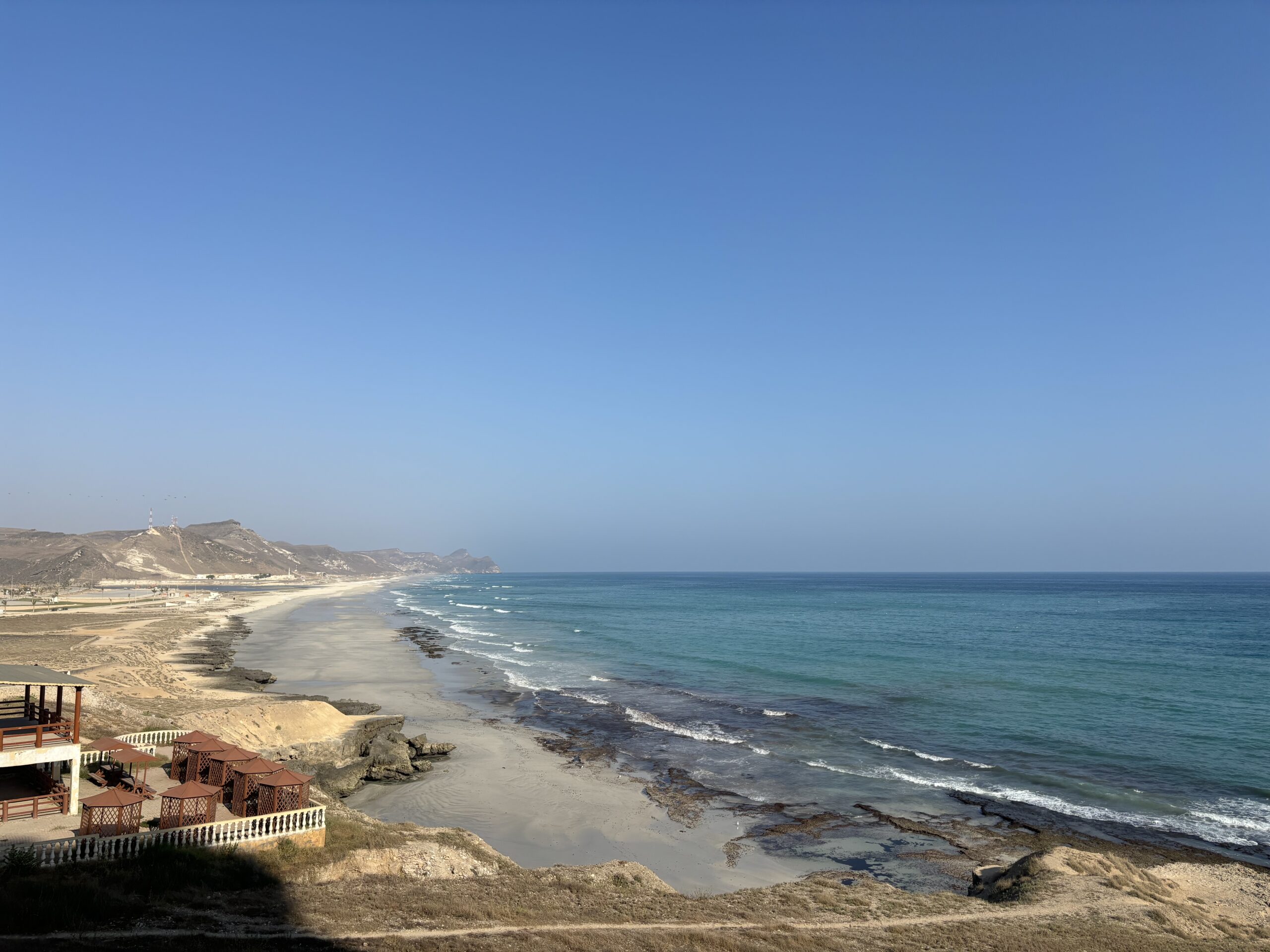
Mughasil Beach, Oman
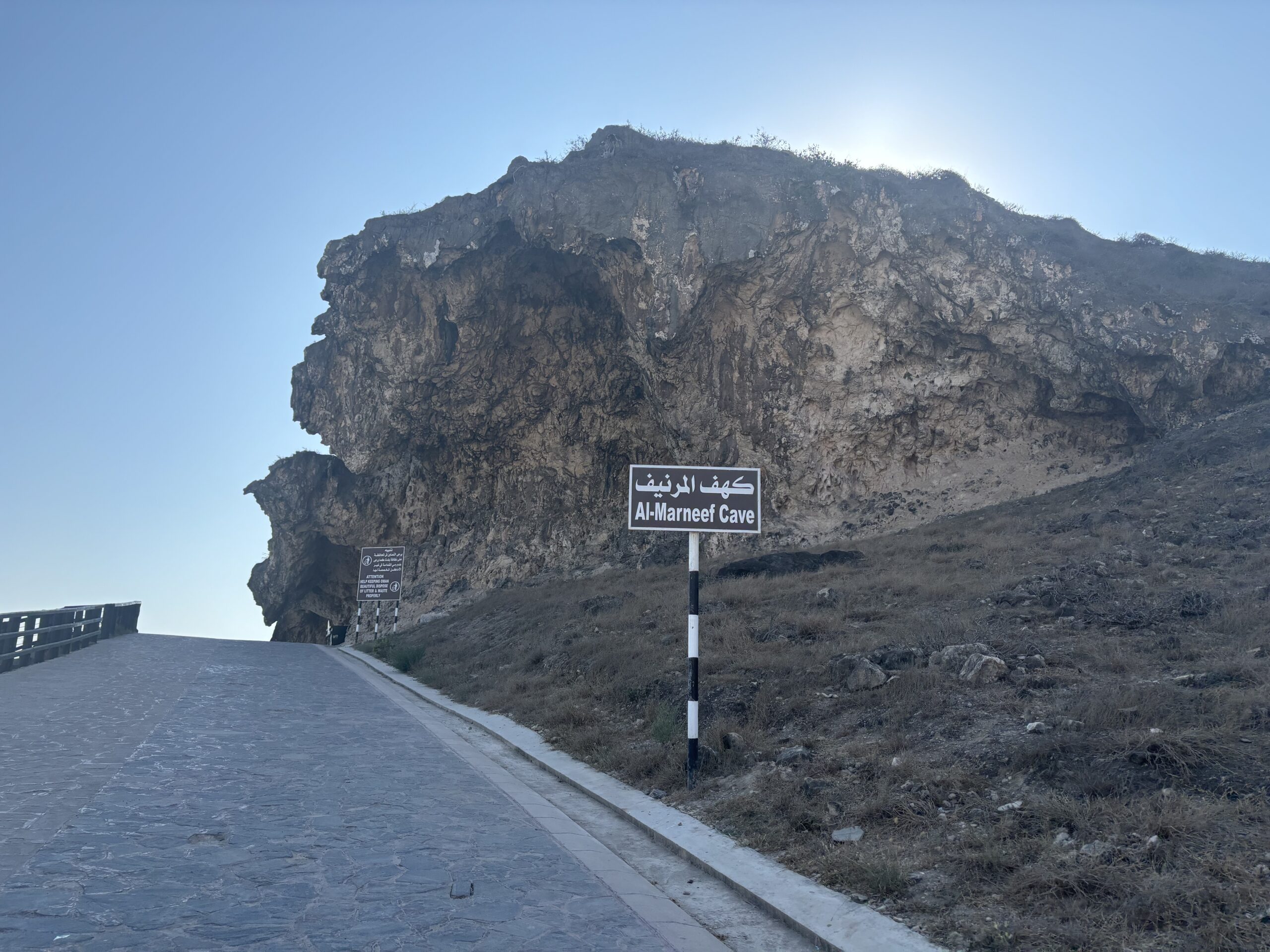
Al-Manreef Cave, Oman
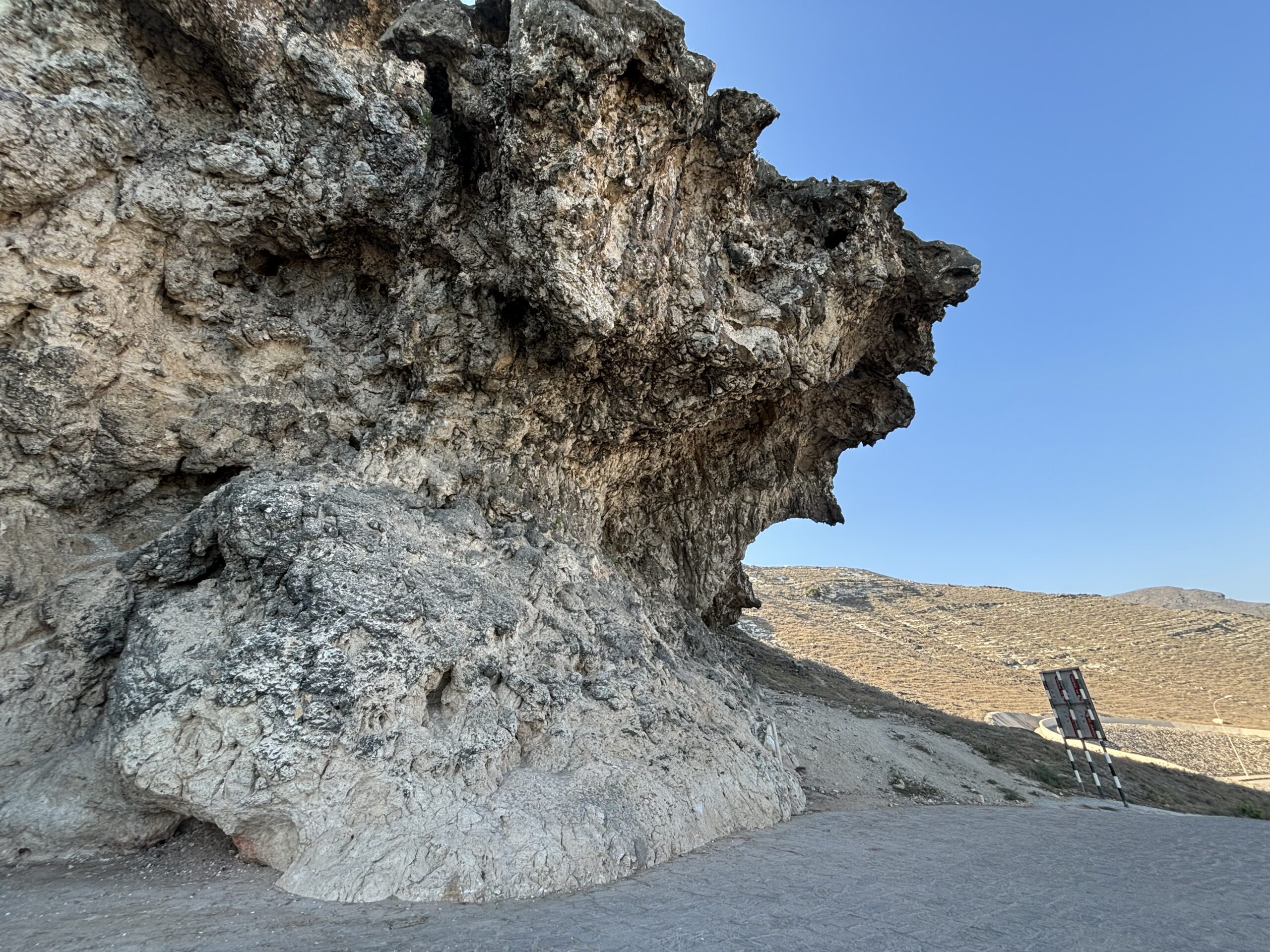
Al-Manreef Cave
Visit Prophet Job (Ayoub)’s Tomb
For those interested in religious sites, head northwest to Jabal Ittin mountain to visit the tomb of Prophet Job (Ayoub in Arabic – peace be upon him). Prophet Job holds significance for Muslims, Christians and Jews. Hence, this sacred mausoleum attracts many visitors.
The tomb itself is simple in a rectangular room topped by a green Islamic styled dome. Prophet Job’s grave measures about 4 meters in length. Not as long as Prophet Imran’s tomb, which is one of the longest in the world and located in Salalah city. Still, it remains as important site.
Nearby, there’s a prayer area for visitors who wish to pray. Sitting on top of a mountain, you can enjoy the beautiful views. As with other mountains in Dhofar, don’t be surprised if you cross paths with a few camels during your visit!
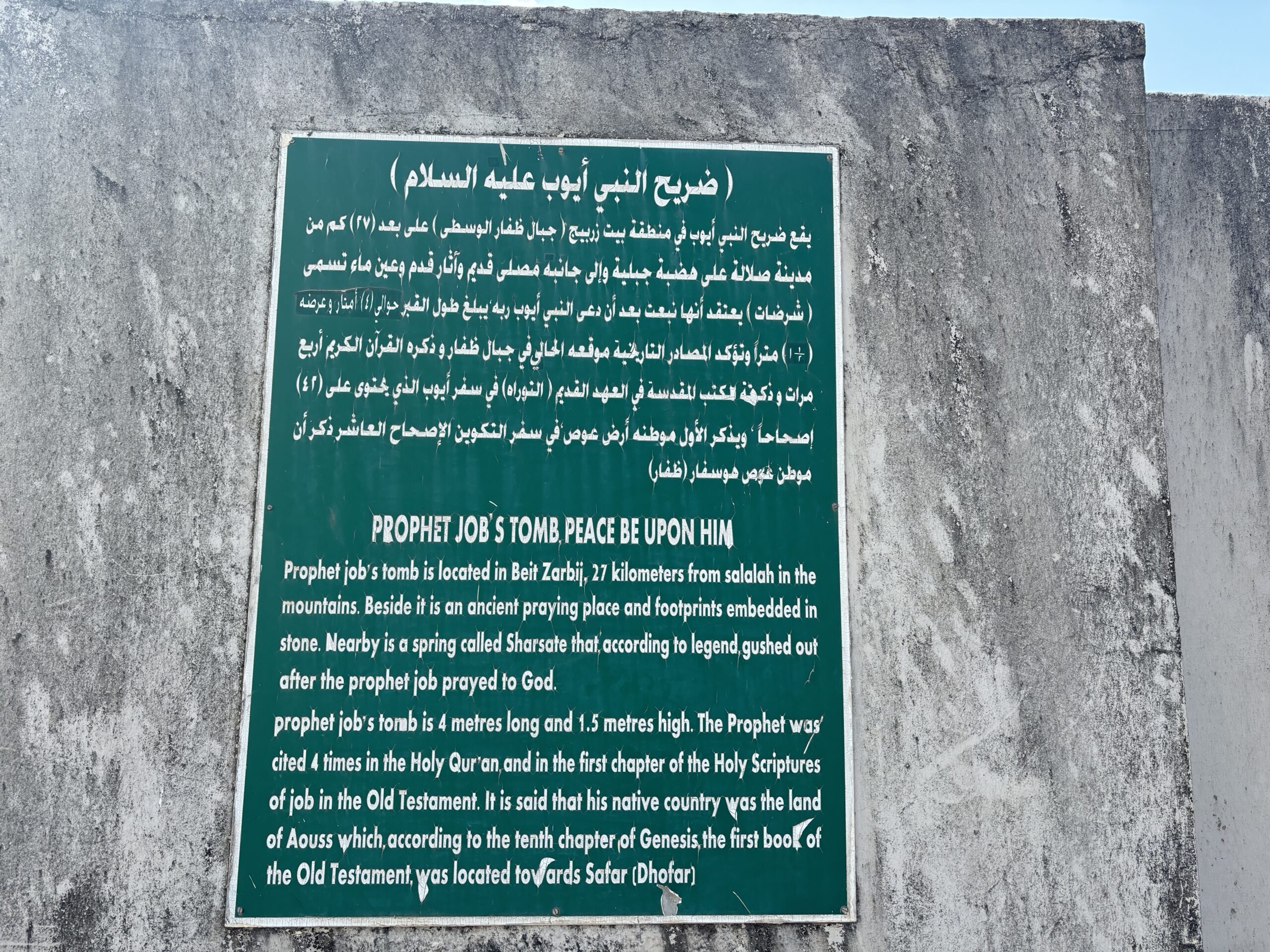
Prophet Job Tomb
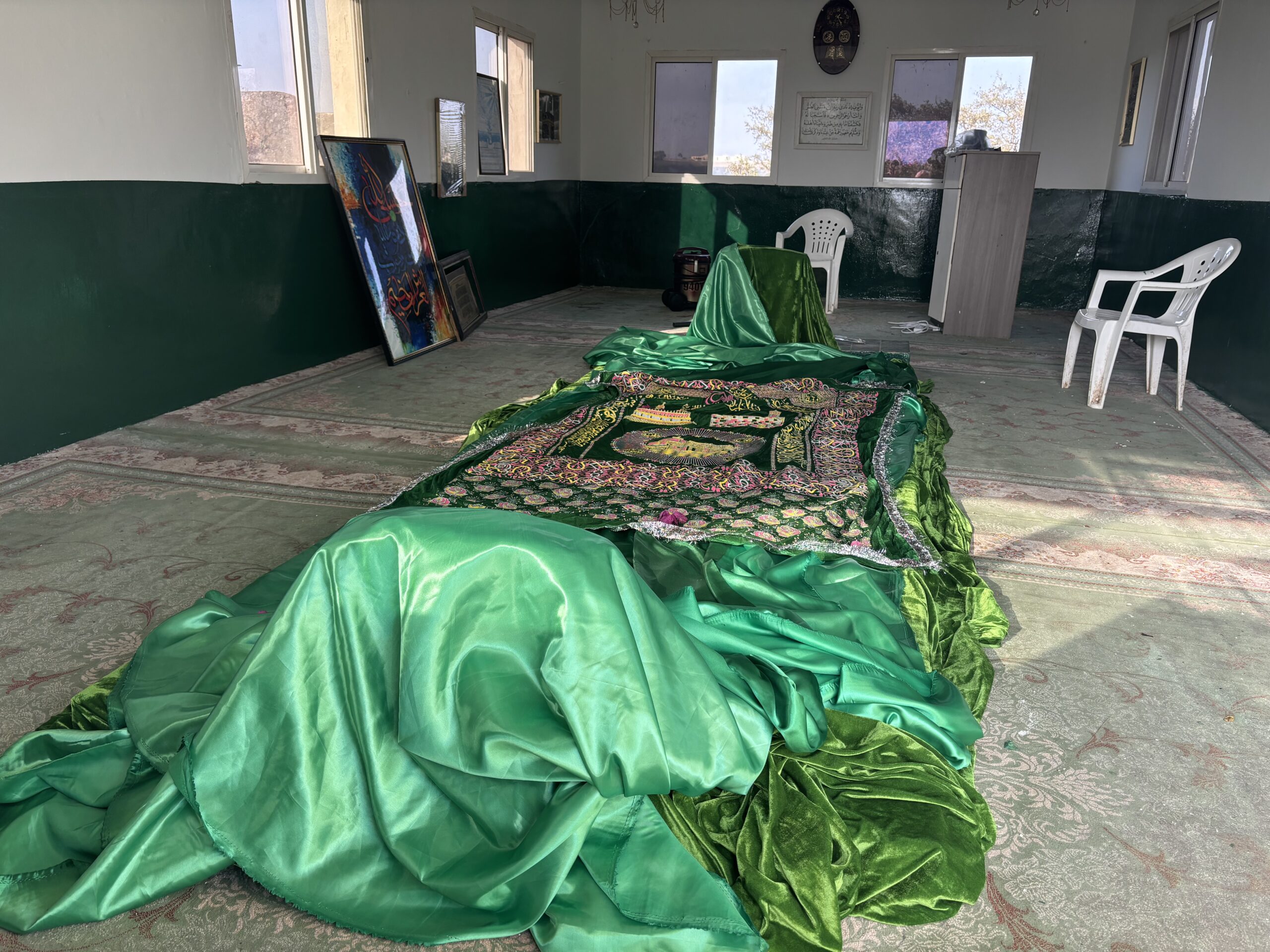
Prophet Ayoub (Job) Tomb
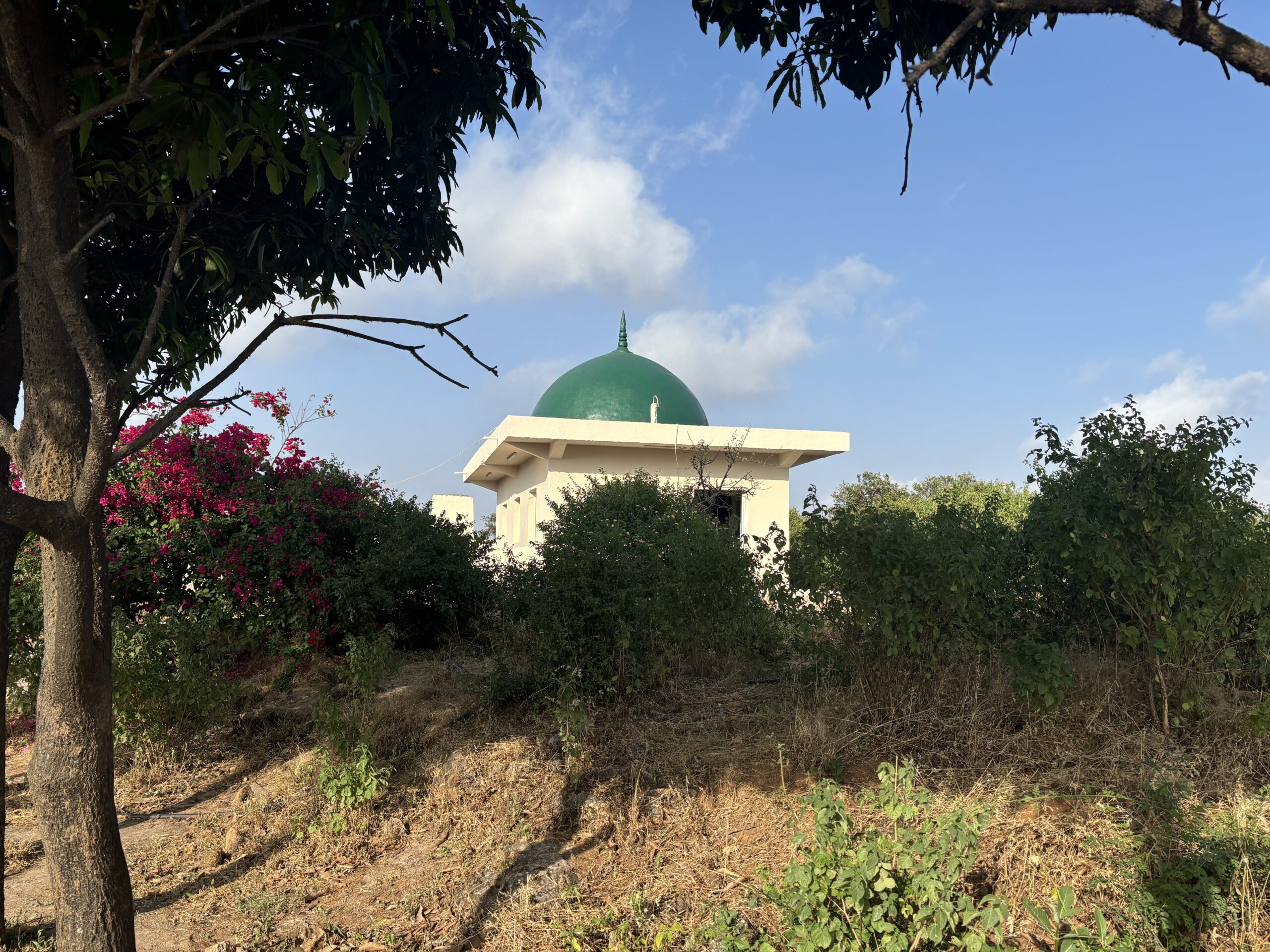
Prophet Ayoub (Job) Tomb – Exterior
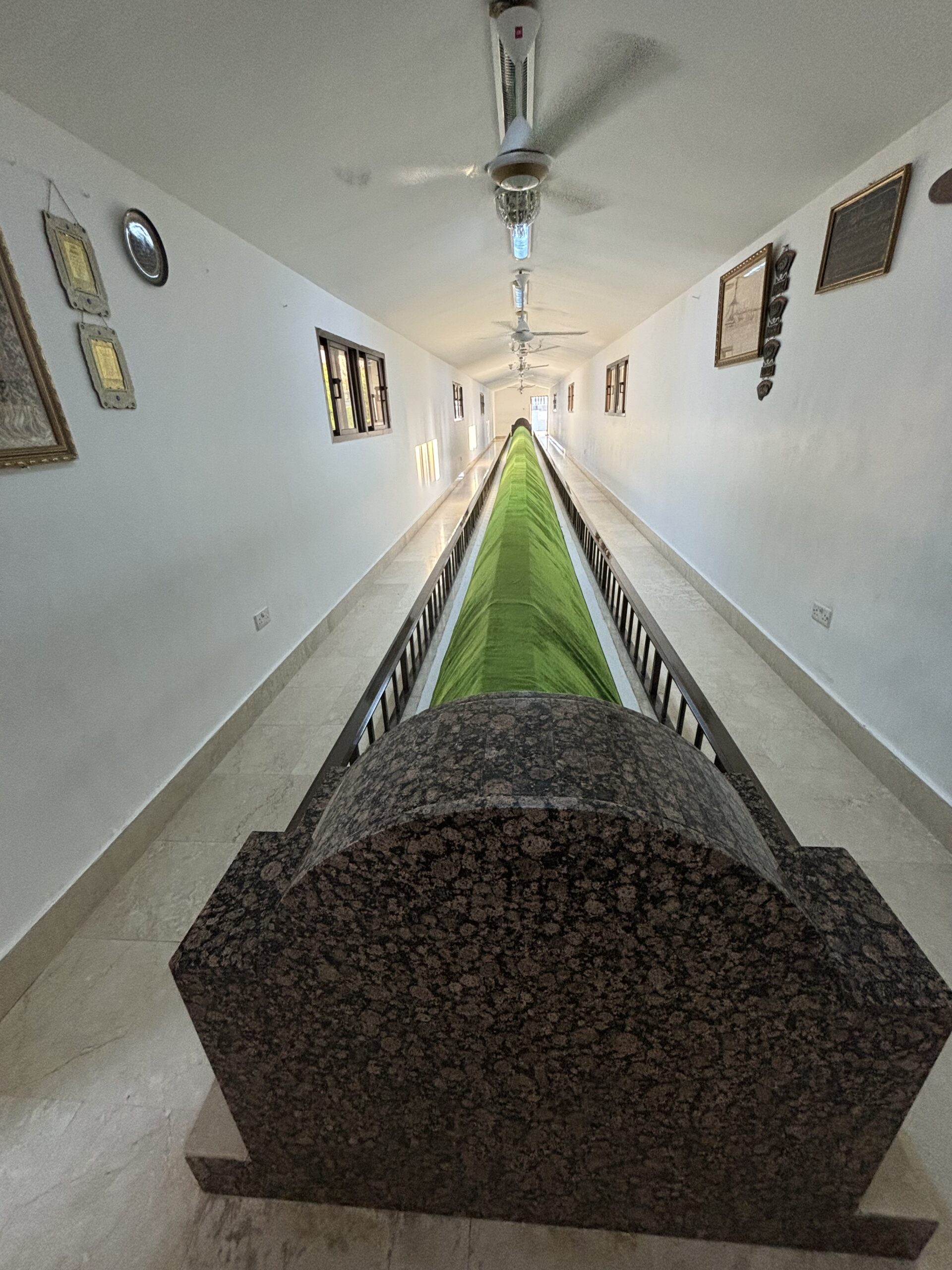
Prophet Imran Tomb – Salalah, Oman
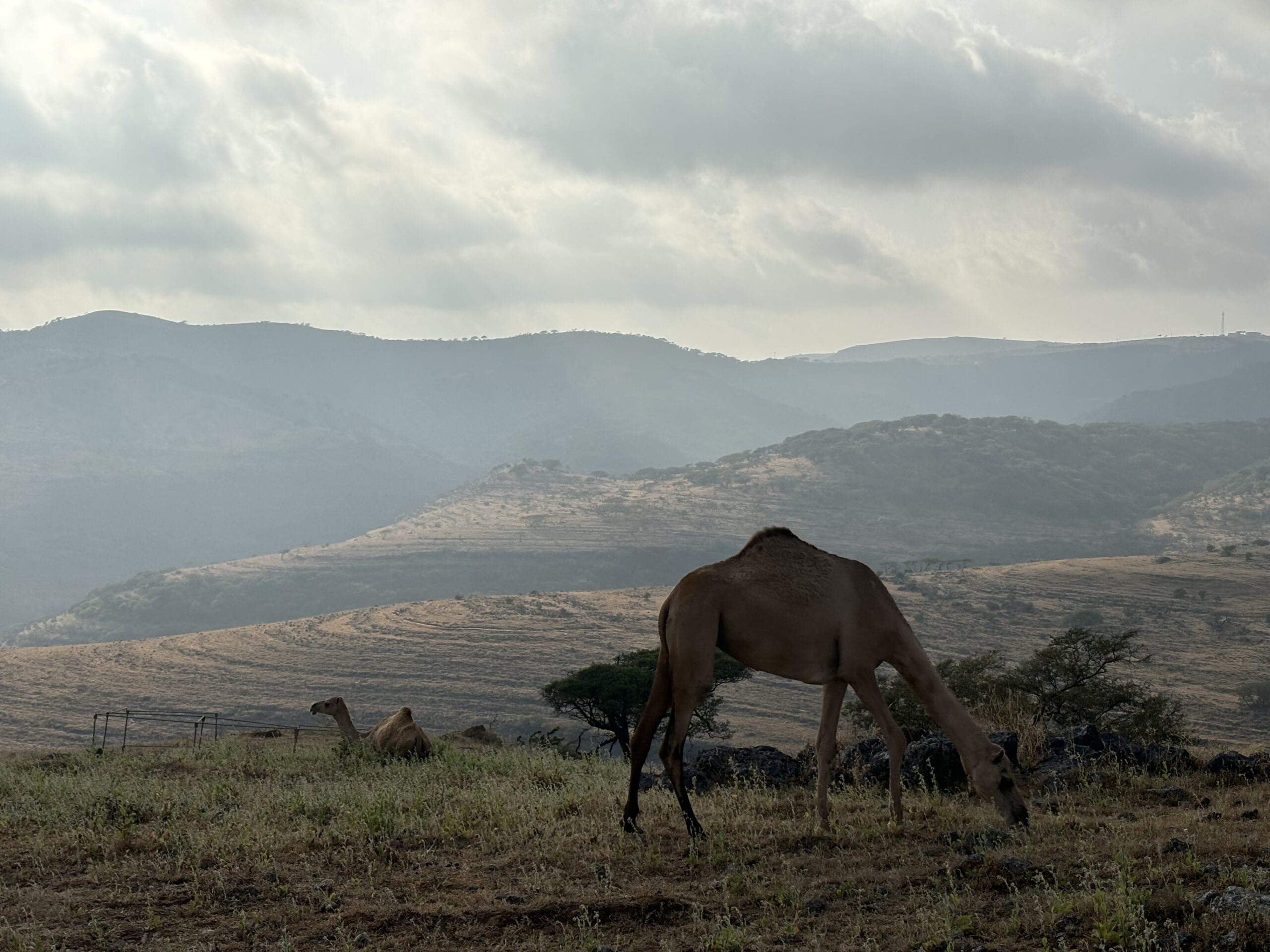
Camels – Jabal Ittin
Where to Stay in Salalah, Oman
If you’re looking for a hotel or a resort from a major international chain, options in Salalah are more limited when compared to Muscat. However, there are a few options. There is the Hilton Salalah Resort, a beachfront resort overlooking the Indian Ocean. Located just 10 minutes’ drive from the city centre. It was undergoing renovations during my visit so I didn’t stay there.
Another option under the IHG One Rewards program is Crowne Plaza Resort Salalah. It also has a white sand beach and is only 2 kilometers from the city centre. It has recently been renovated.
Nearby is Al Baleed Resort Salalah by Anantara. This is the most luxurious resort in Salalah, and is the place to stay if you’re looking for an upscale experience. Anantara is part of the GHA Discovery loyalty program.
While there are no co-branded credit cards for the GHA Discovery program in Canada, sometimes they’ll have a status match opportunity. Alternatively, you can book through a travel advisor associated with programs like Virtuoso, if you value benefits like room upgrades, late check-out, etc.
For a more secluded resort experience, just outside of Salalah is Alila Hinu Bay, part of the World of Hyatt program. It’s located in Mirbat, around 75 kilometers east of Salalah. Surprisingly, Marriott Bonvoy doesn’t yet have a presence in Salalah.

Image Credit: Al Baleed Resort Salalah
Conclusion
Whether you’re an adventure seeker, a nature enthusiast or searching for a warm retreat, Salalah has it all. If you visit during Al Khareef season, you’ll witness the transformation of the arid landscapes into lush greenery. It’s simply breathtaking. With its towering mountains, captivating caves, winding valleys, cascading waterfalls, and pristine beaches, Salalah is an unforgettable destination.
